Preparations for walking the Nakasendo in Japan
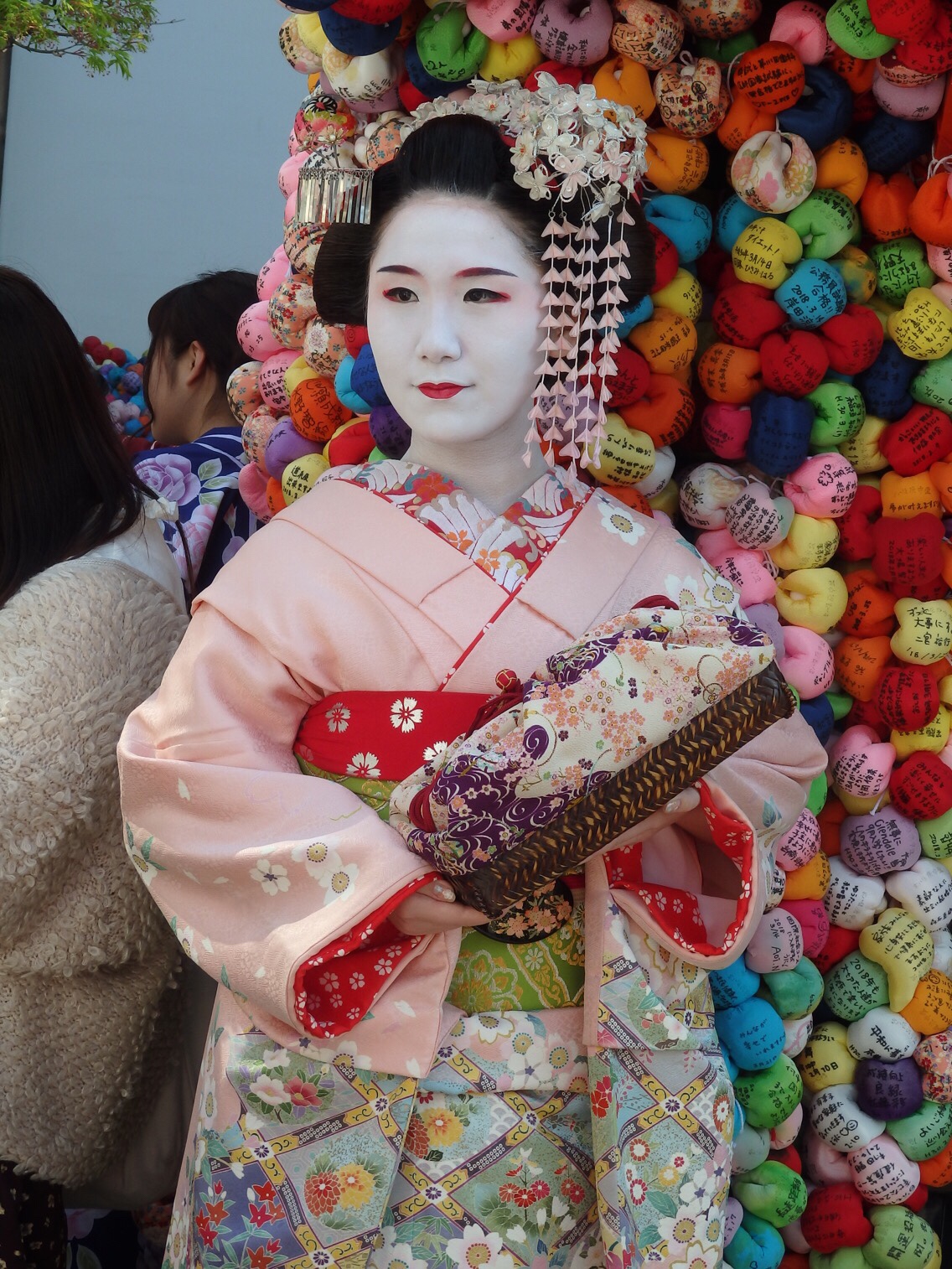
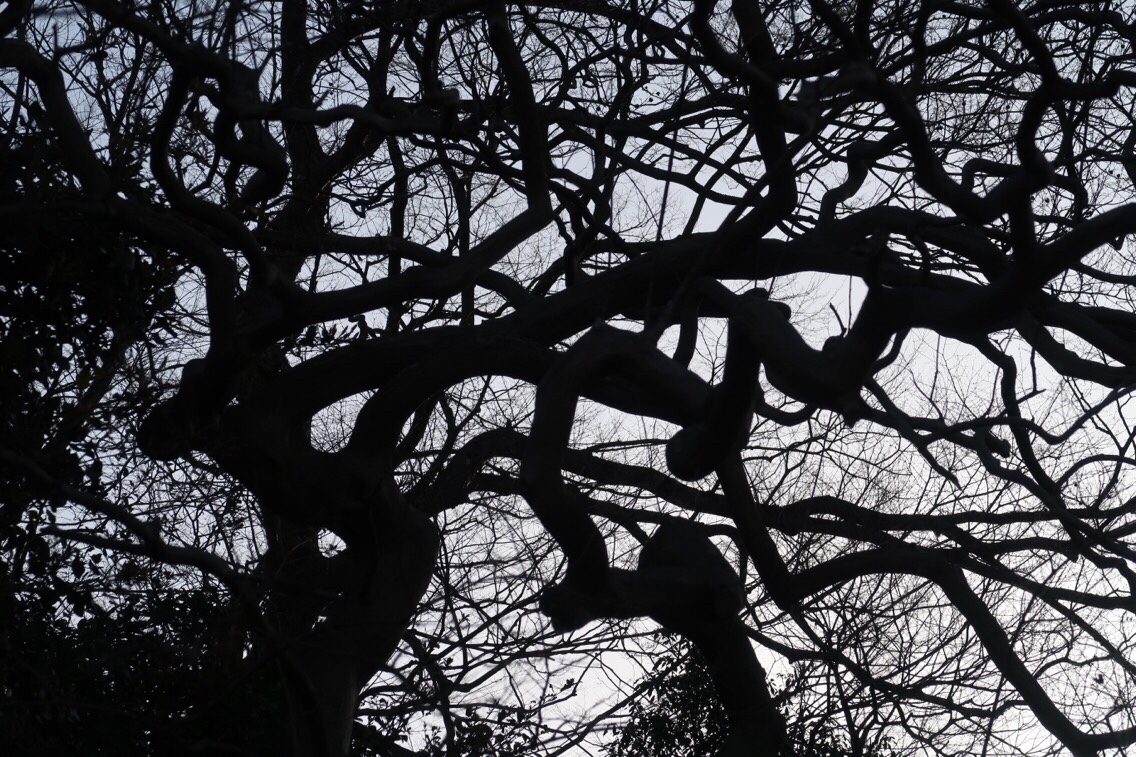
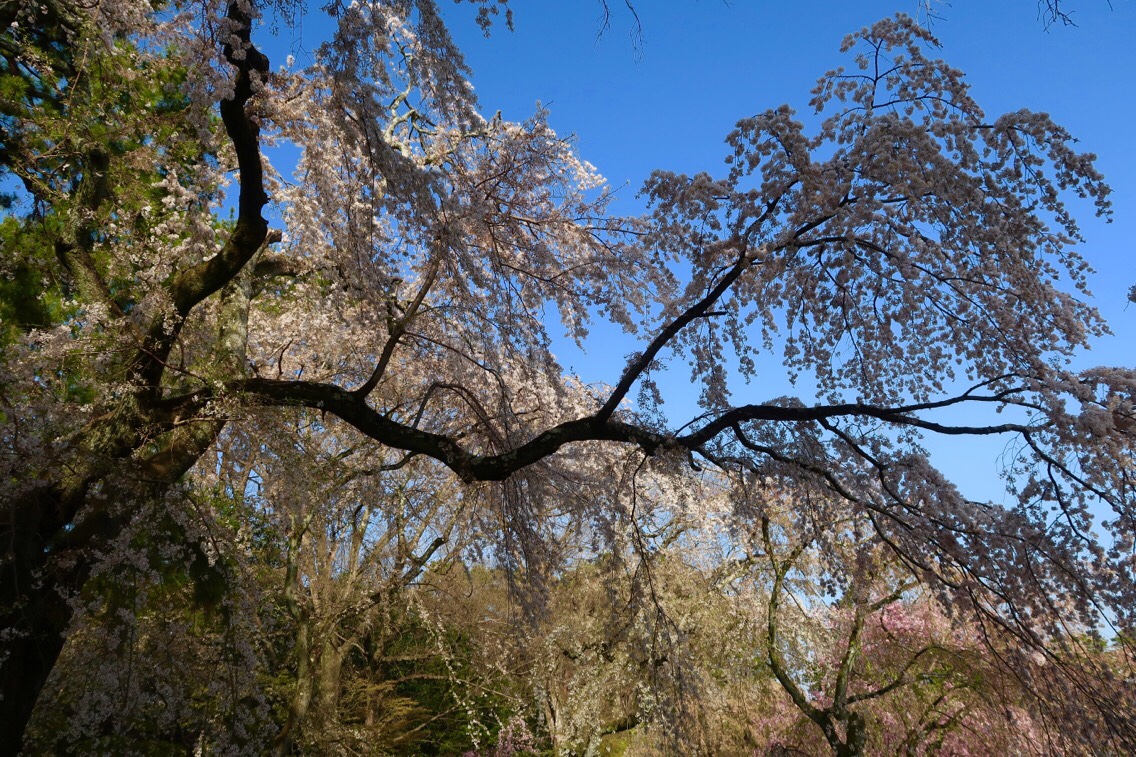
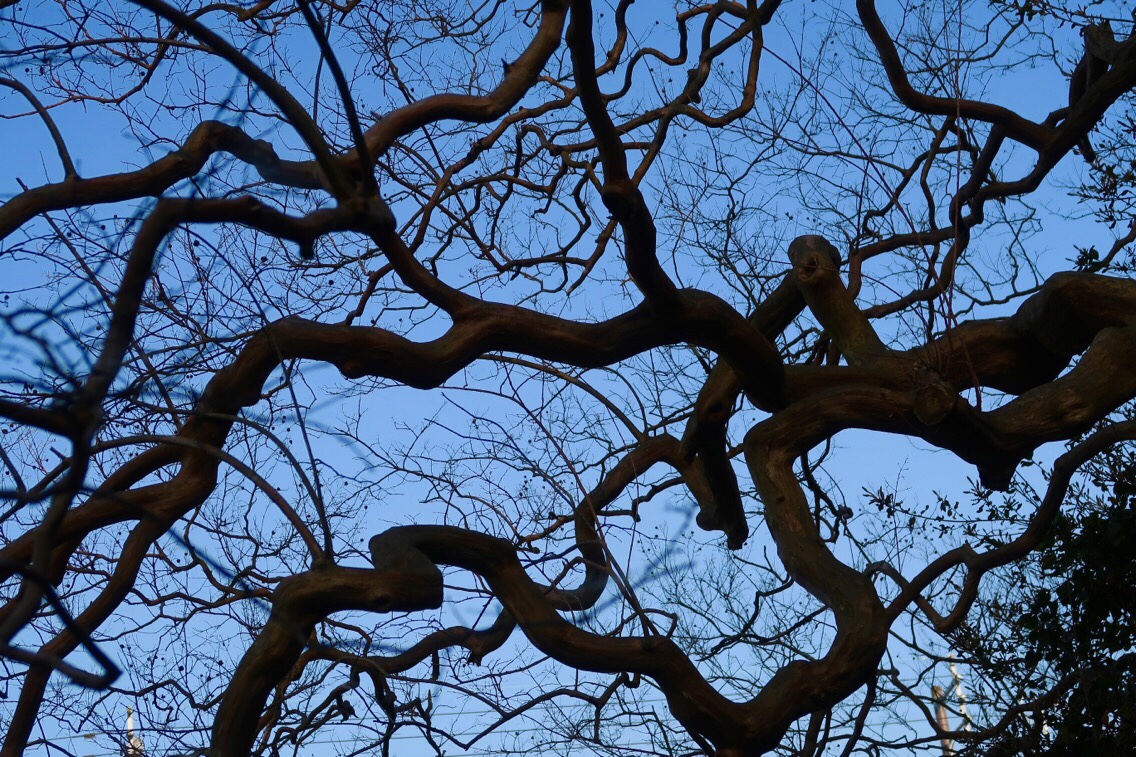
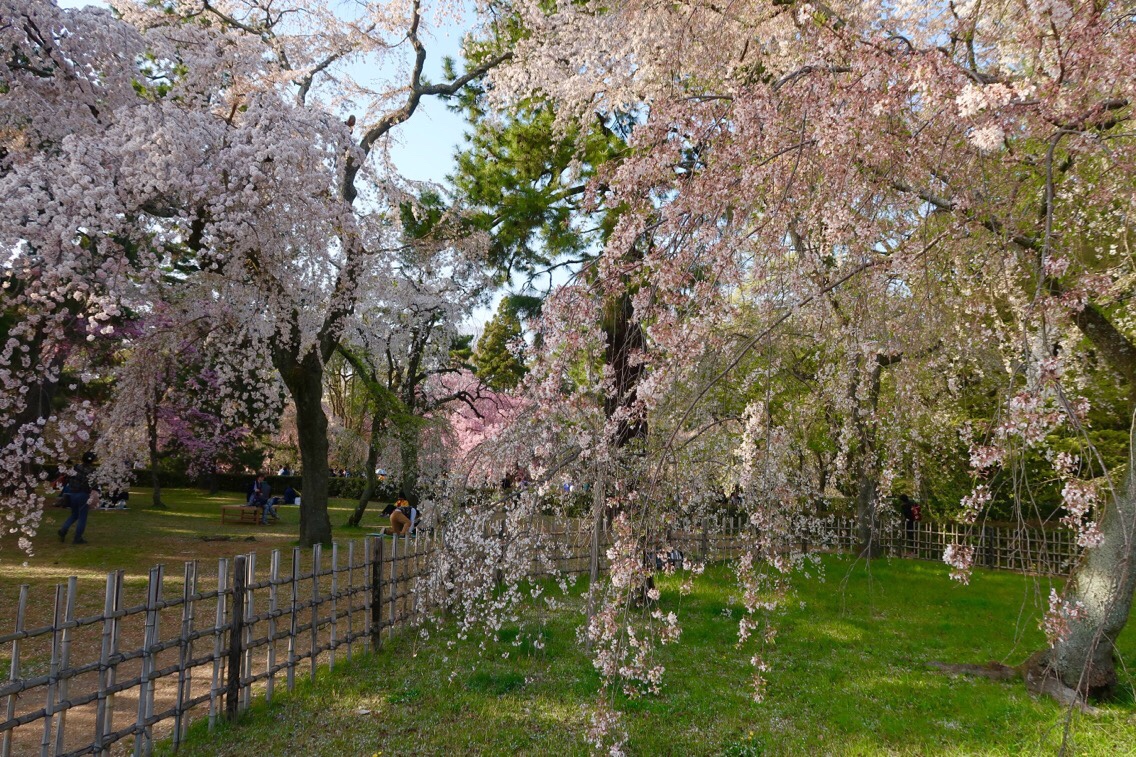
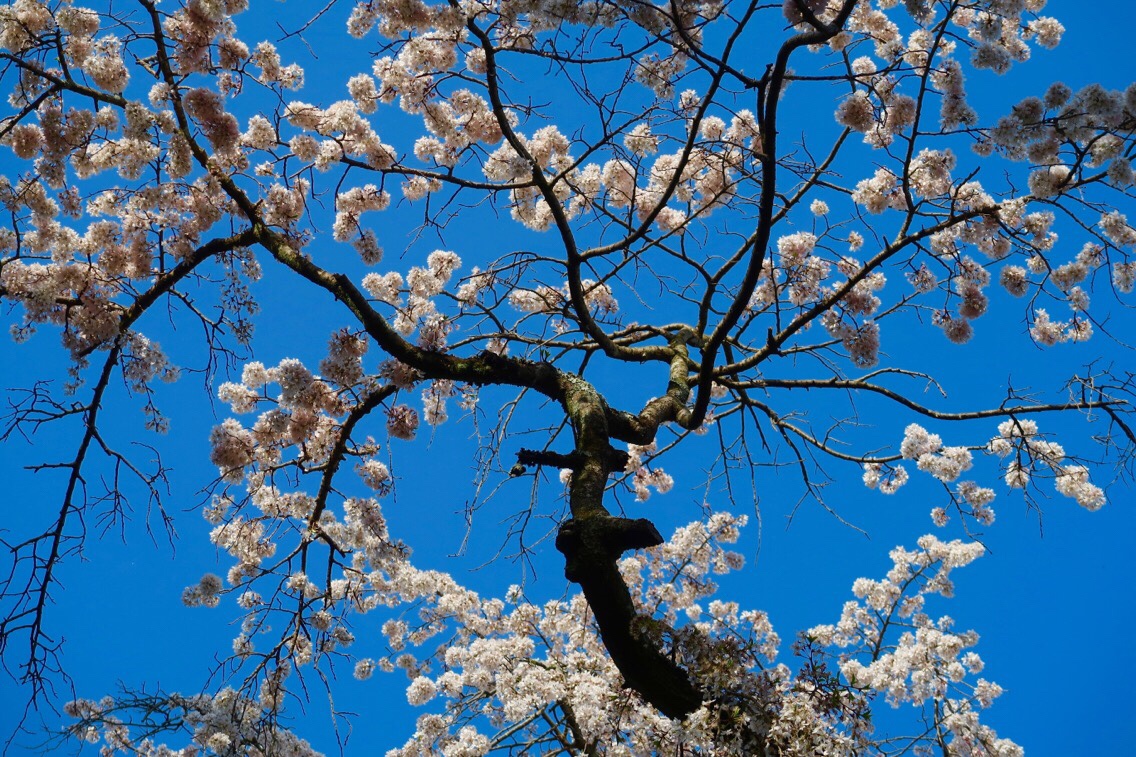
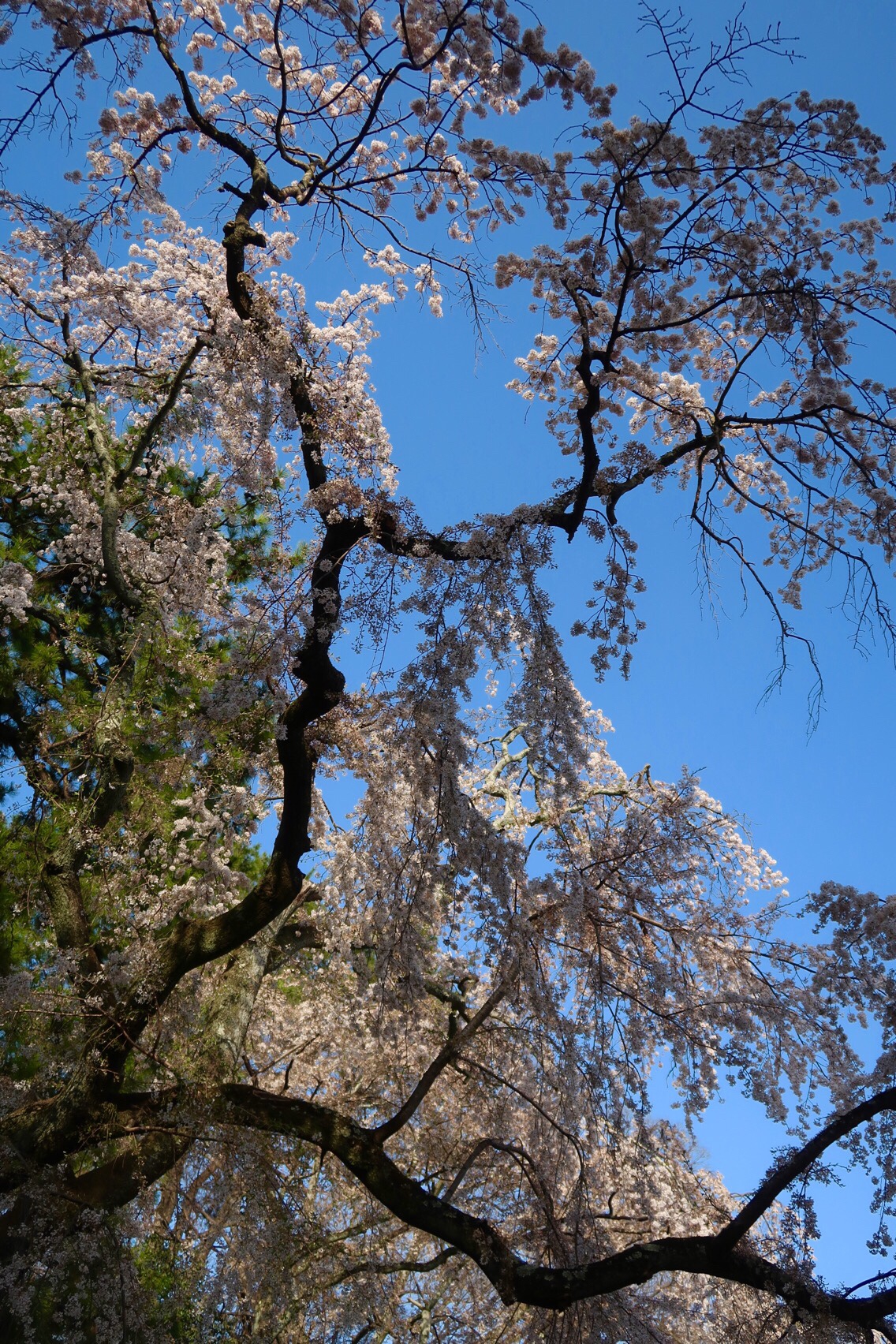
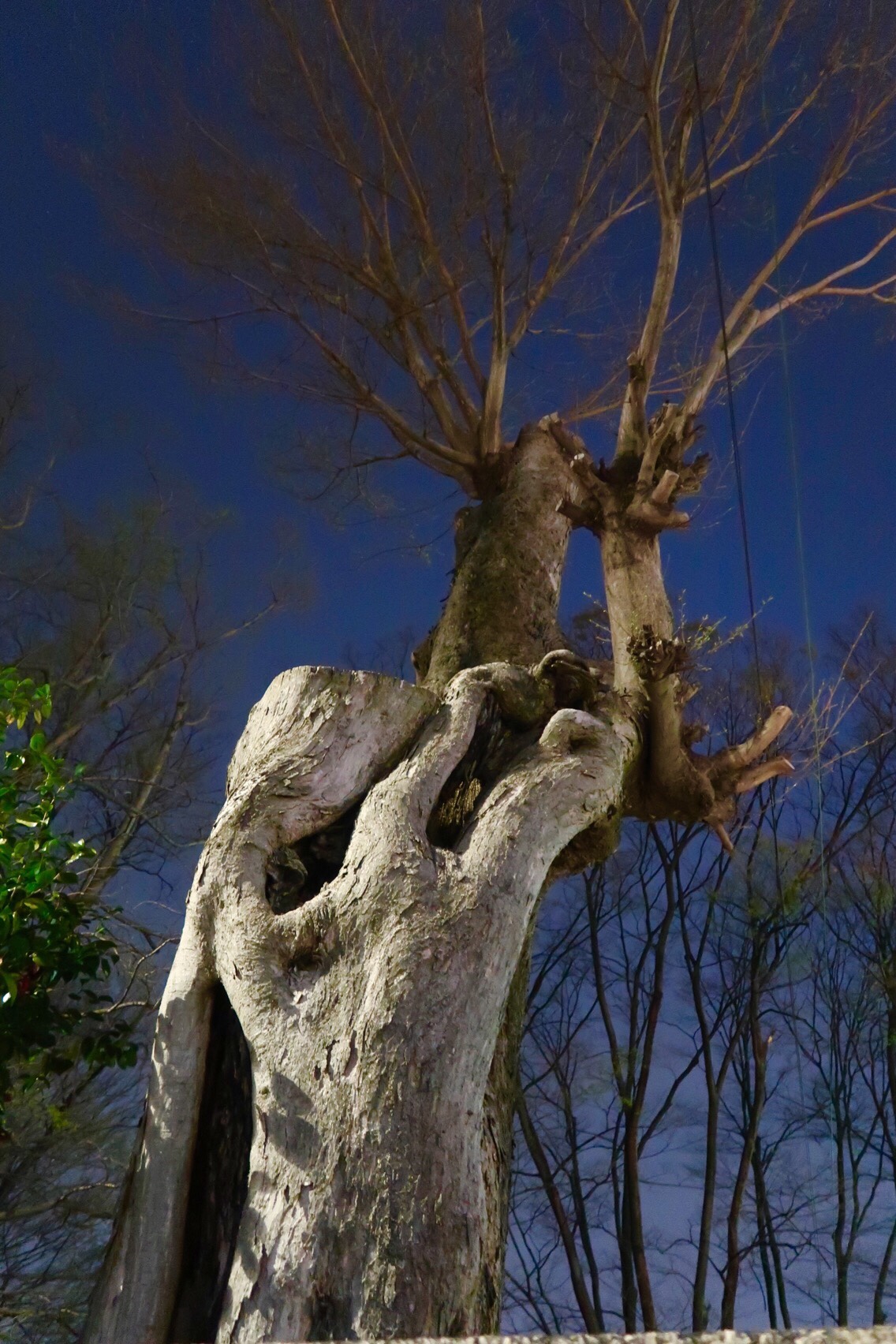
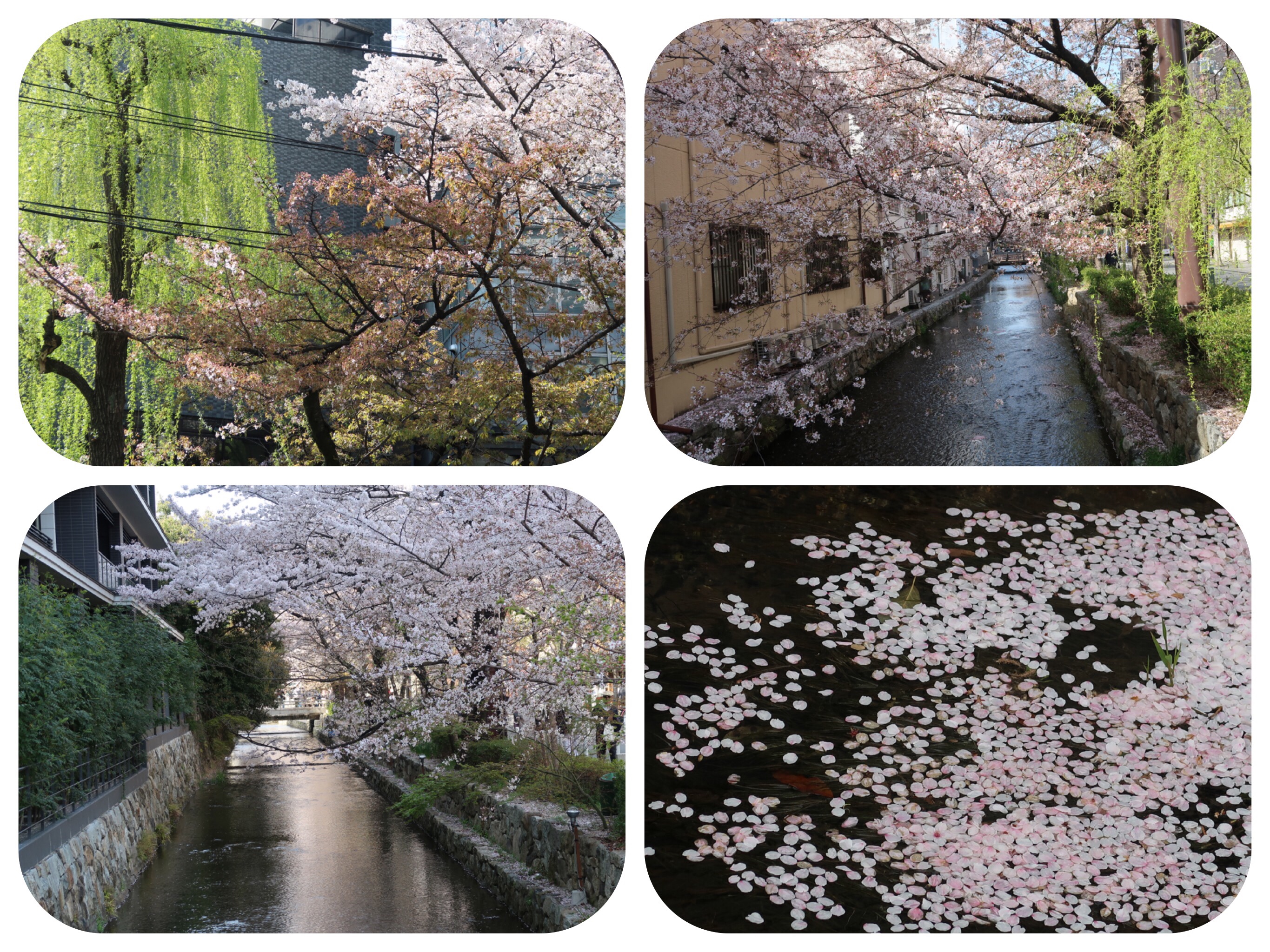
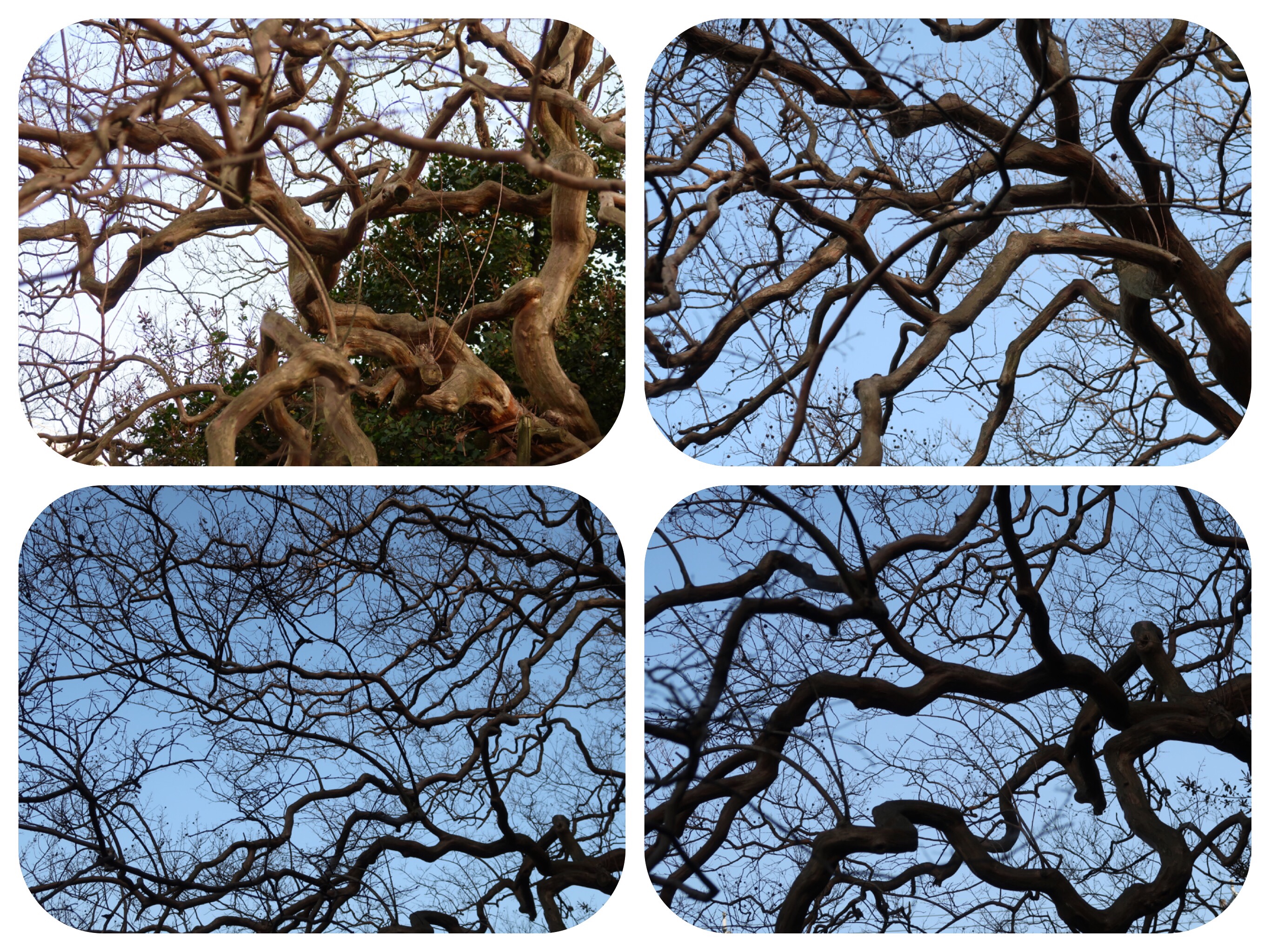
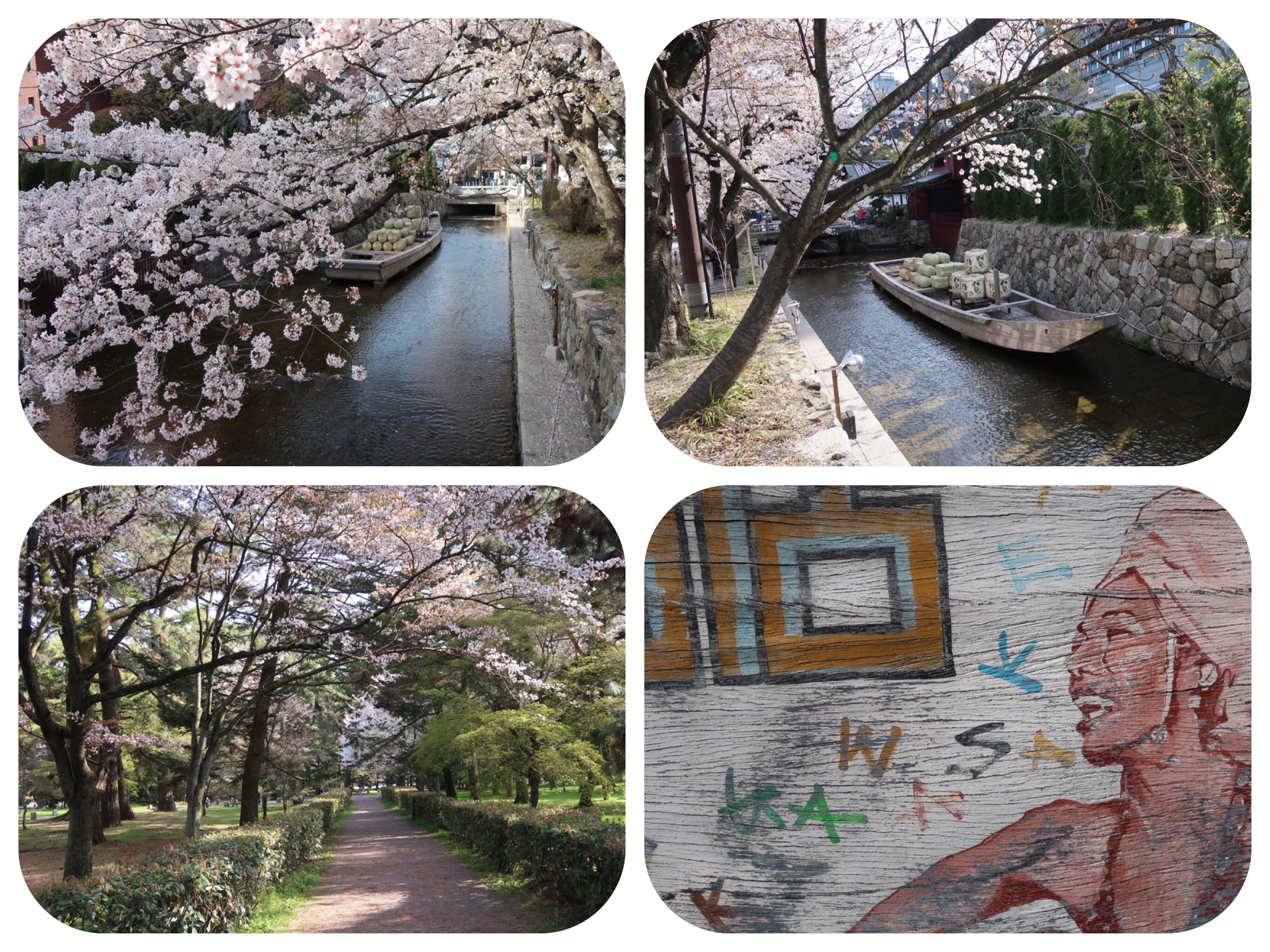
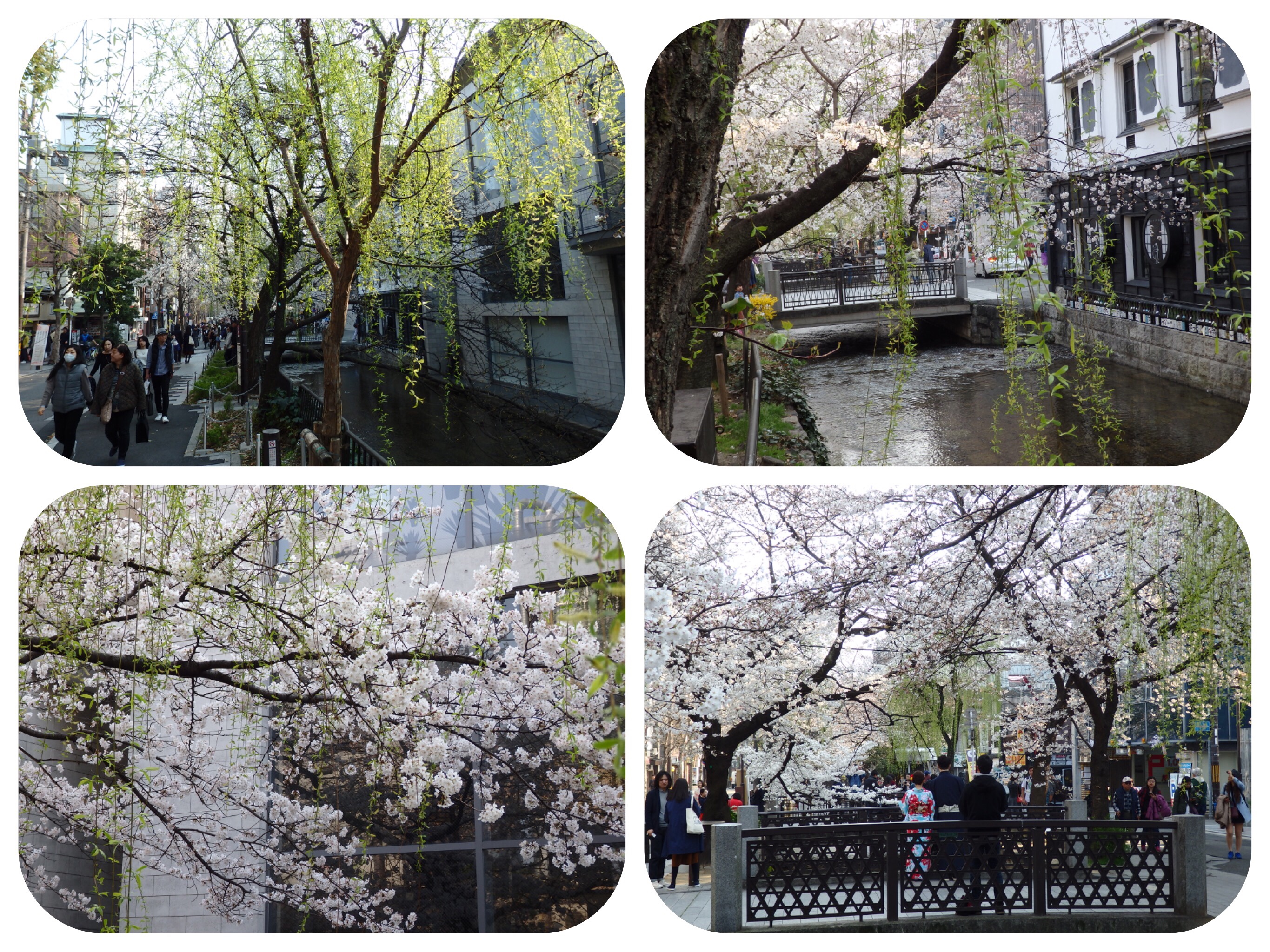
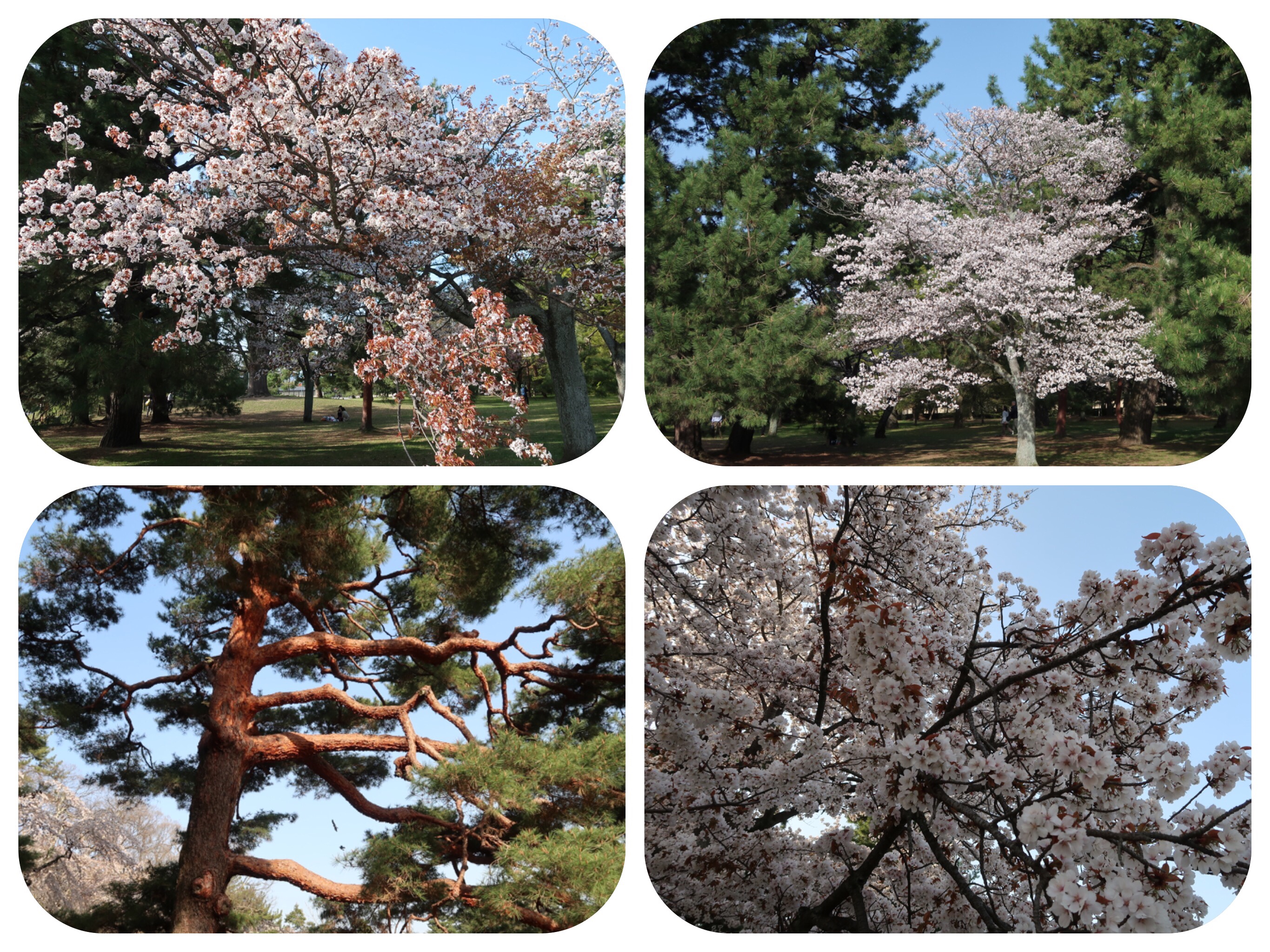
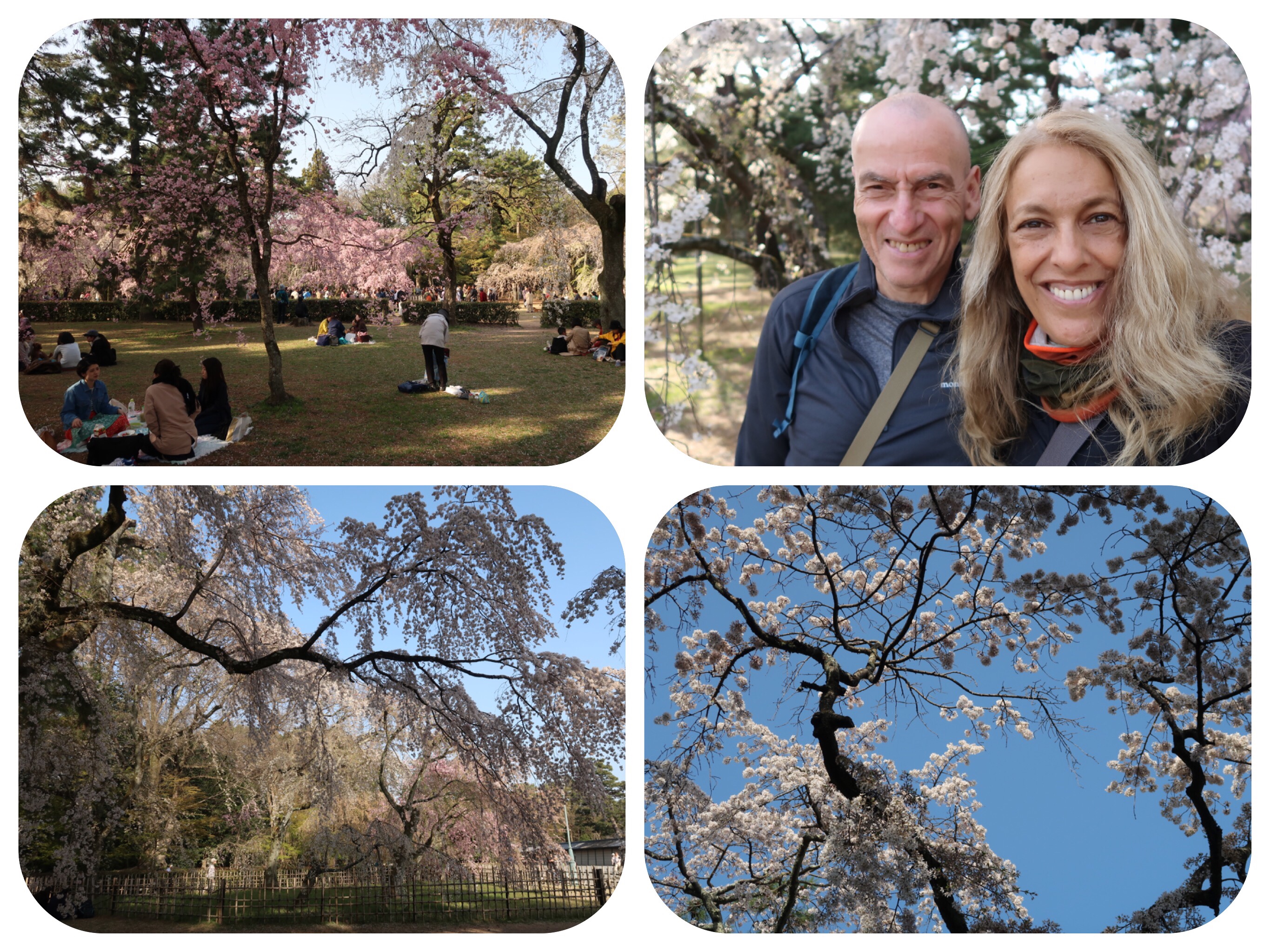
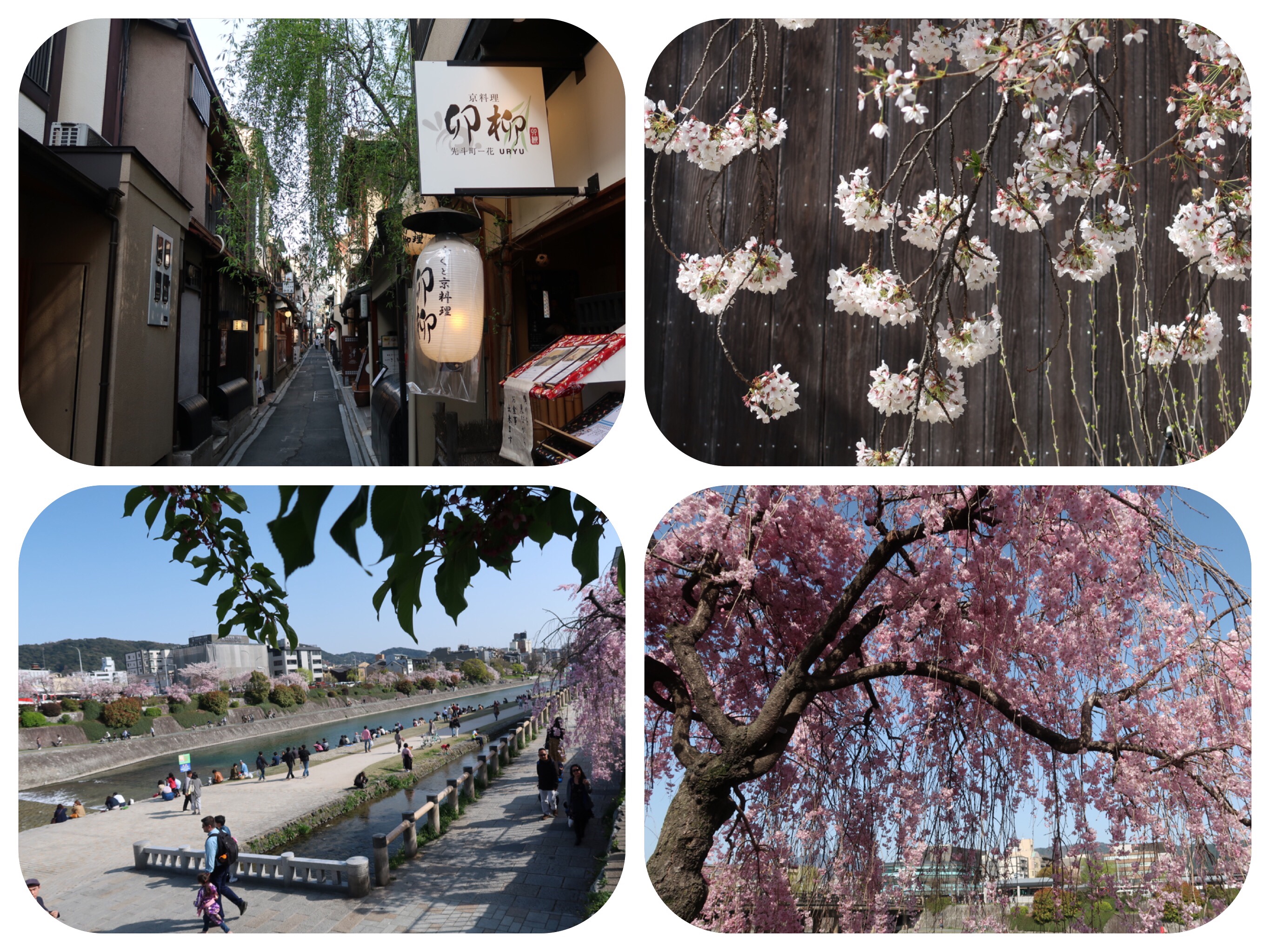
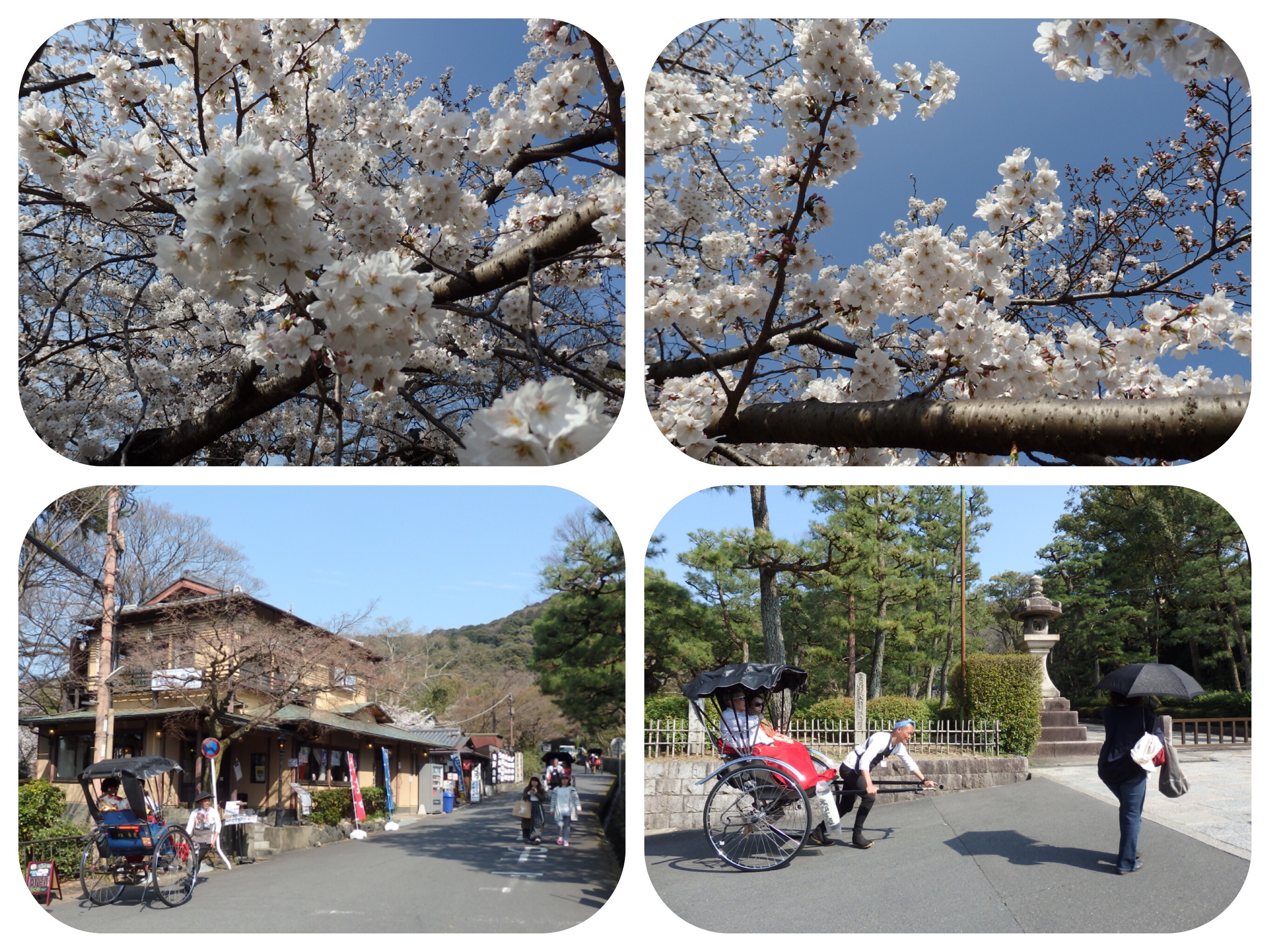
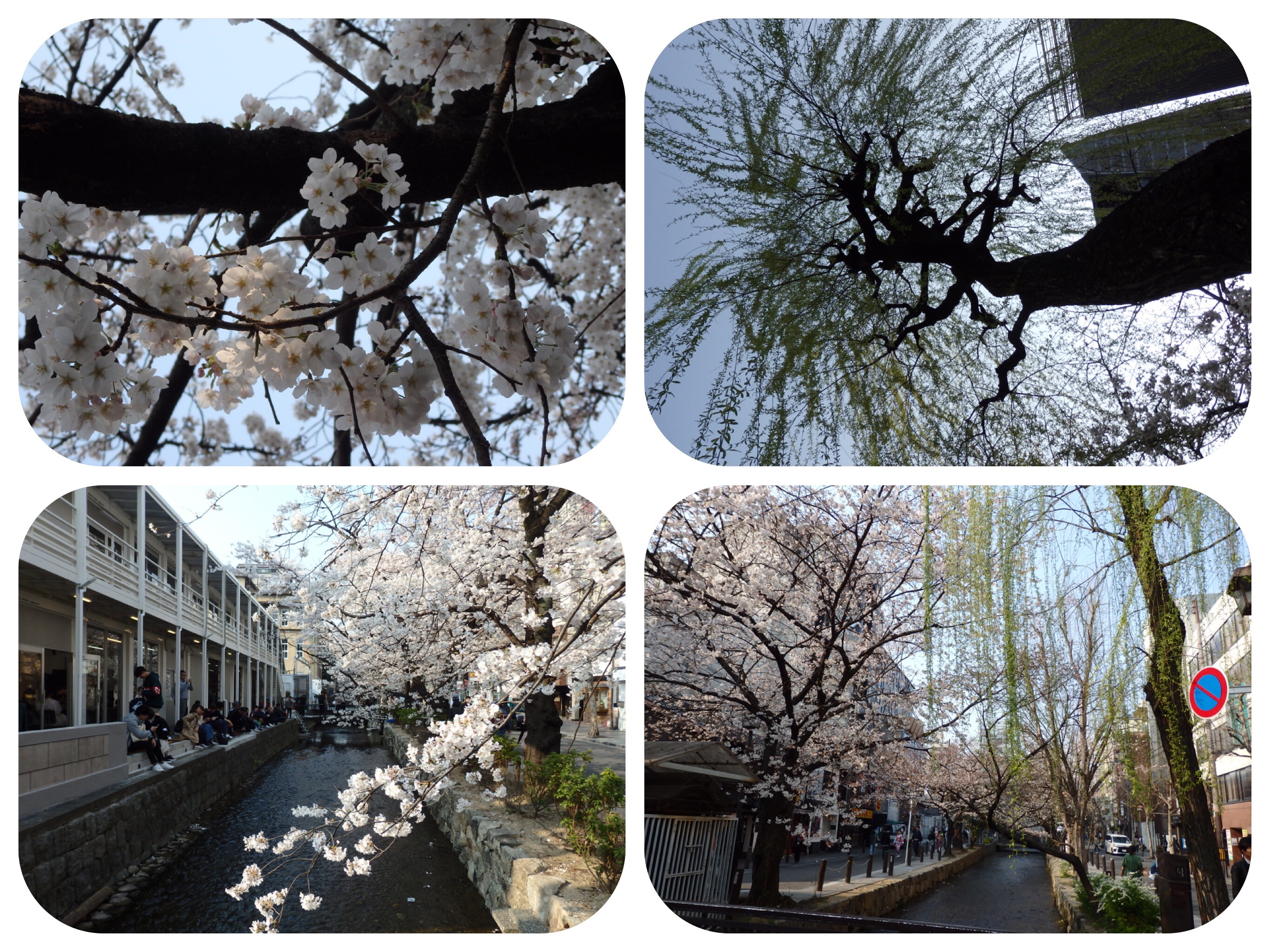
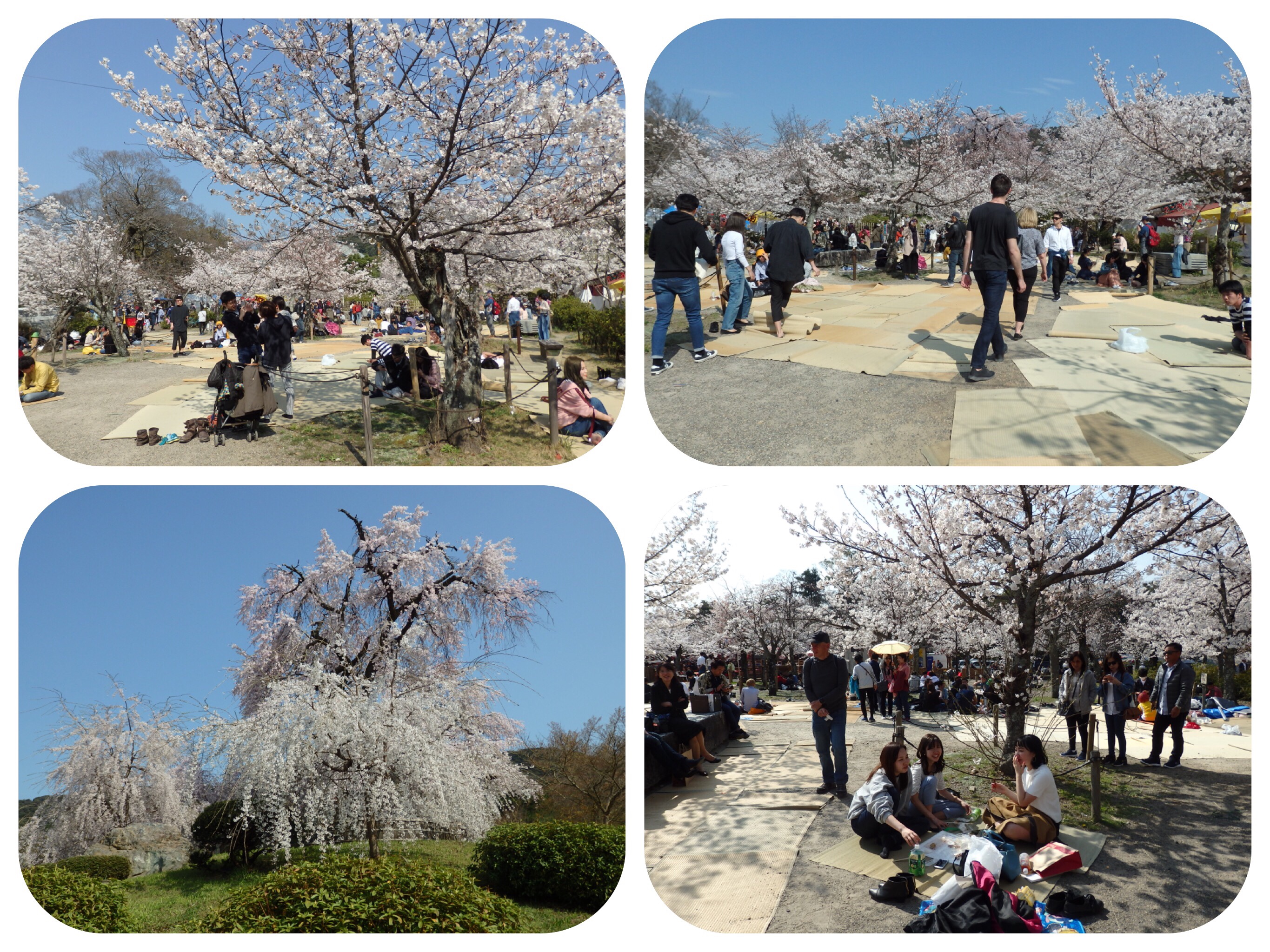
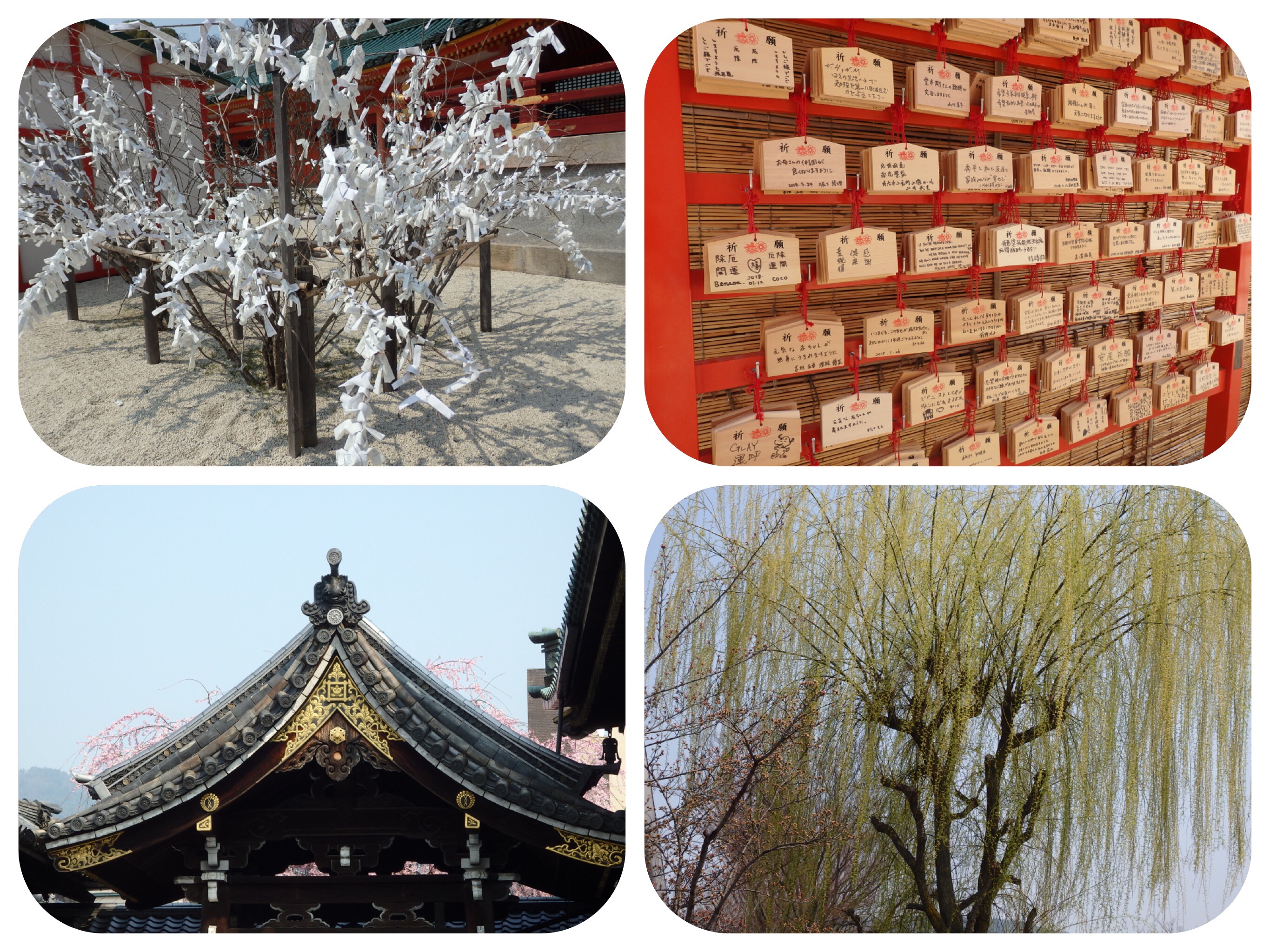
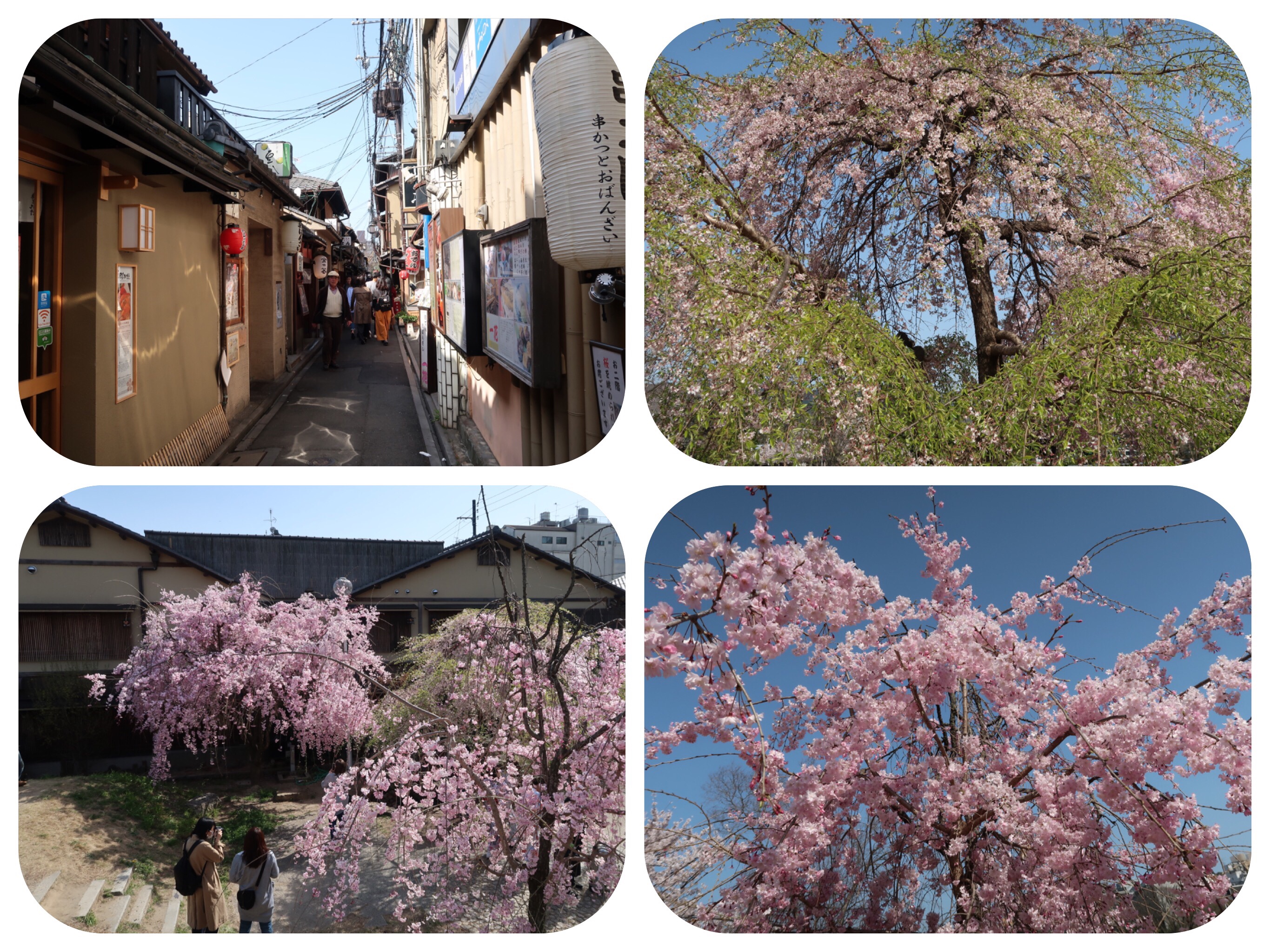
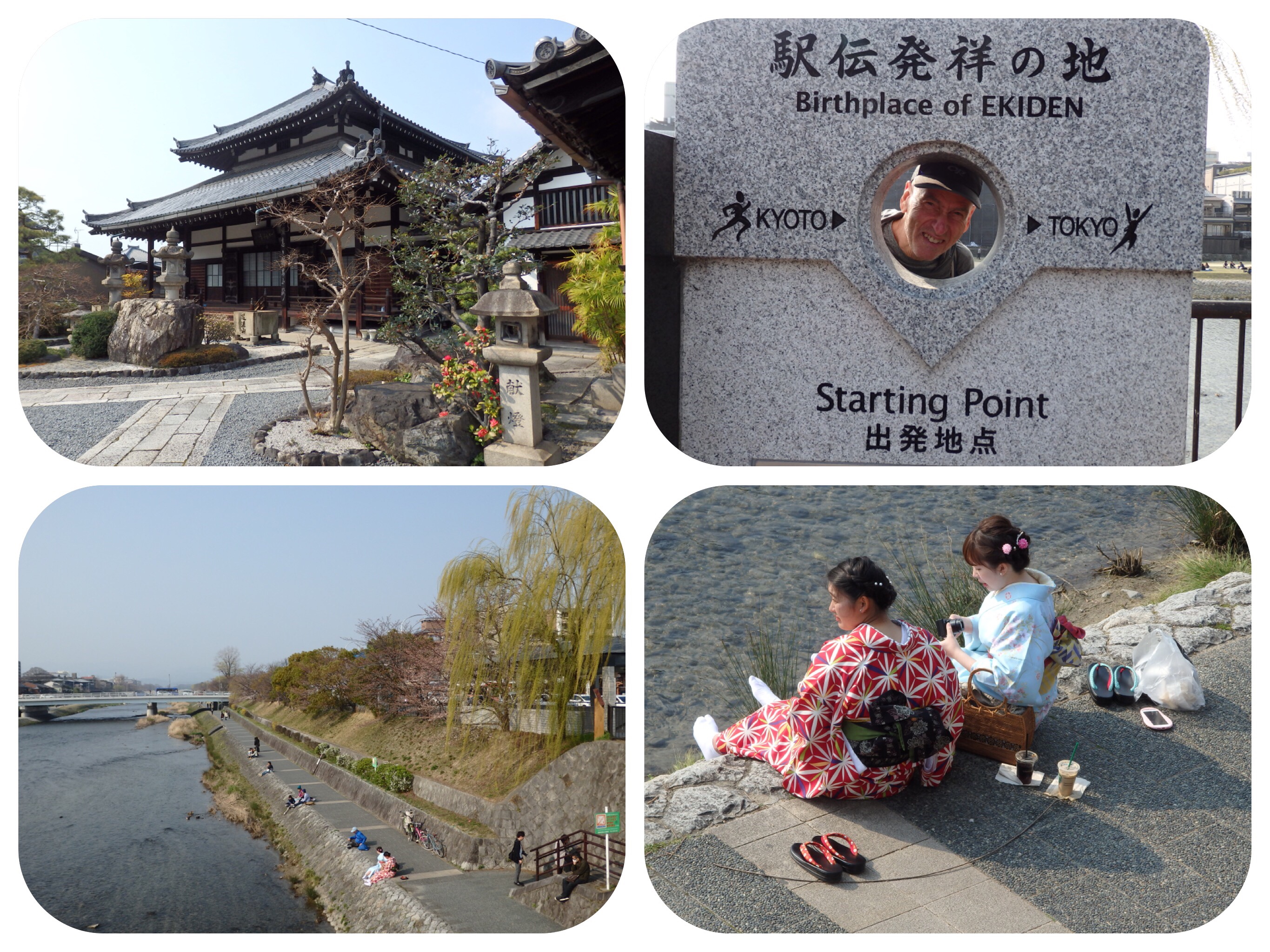
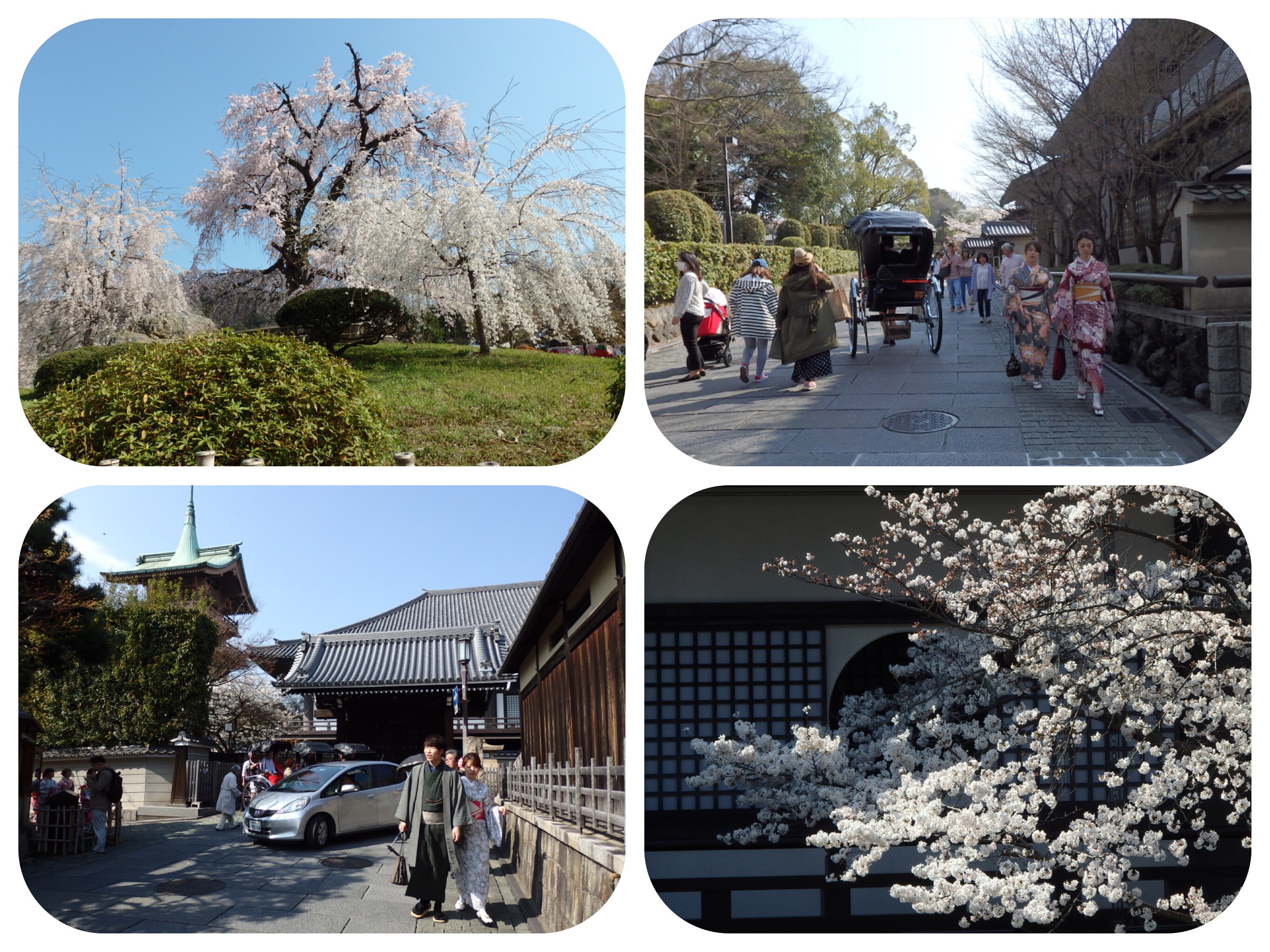
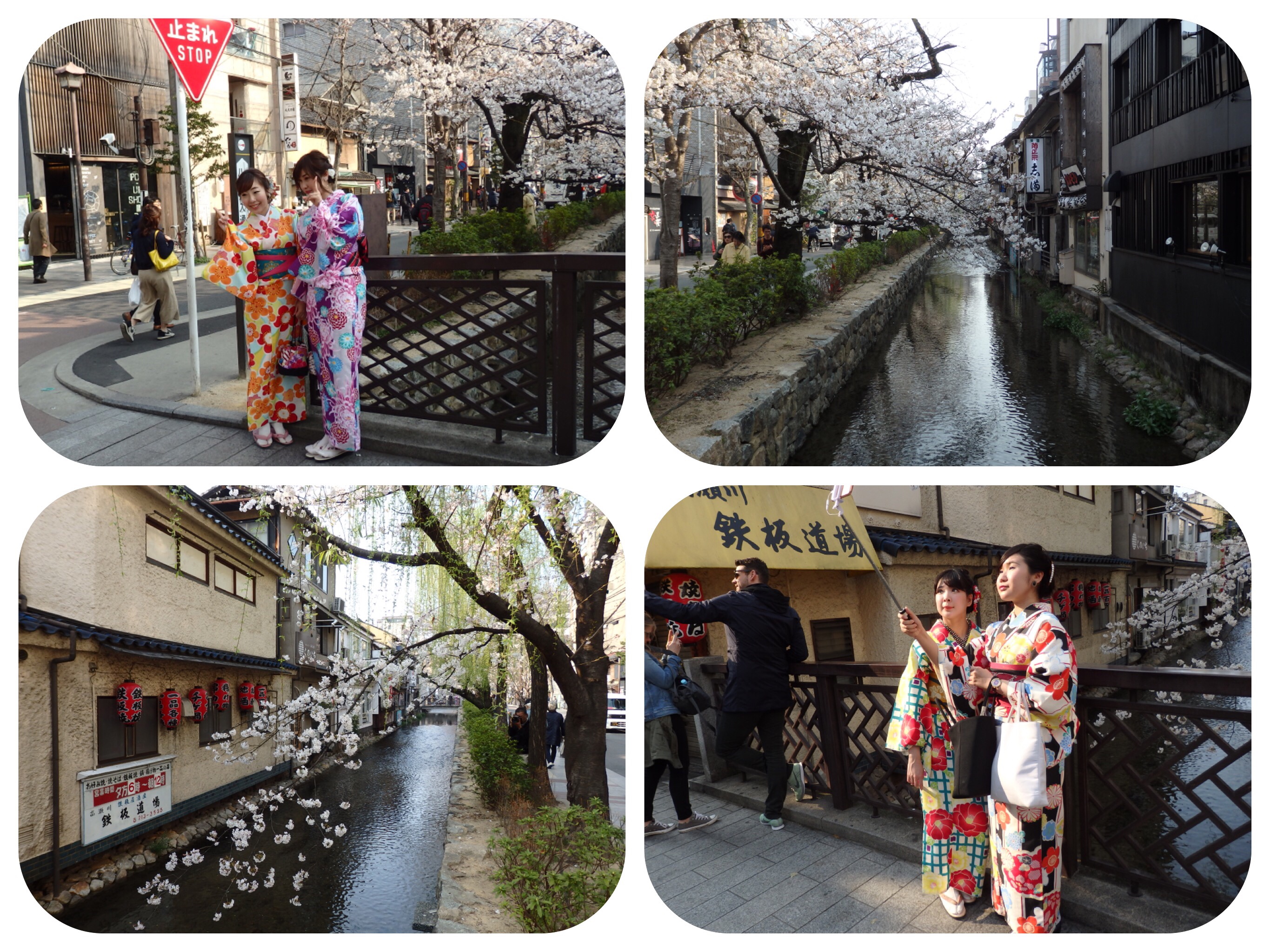
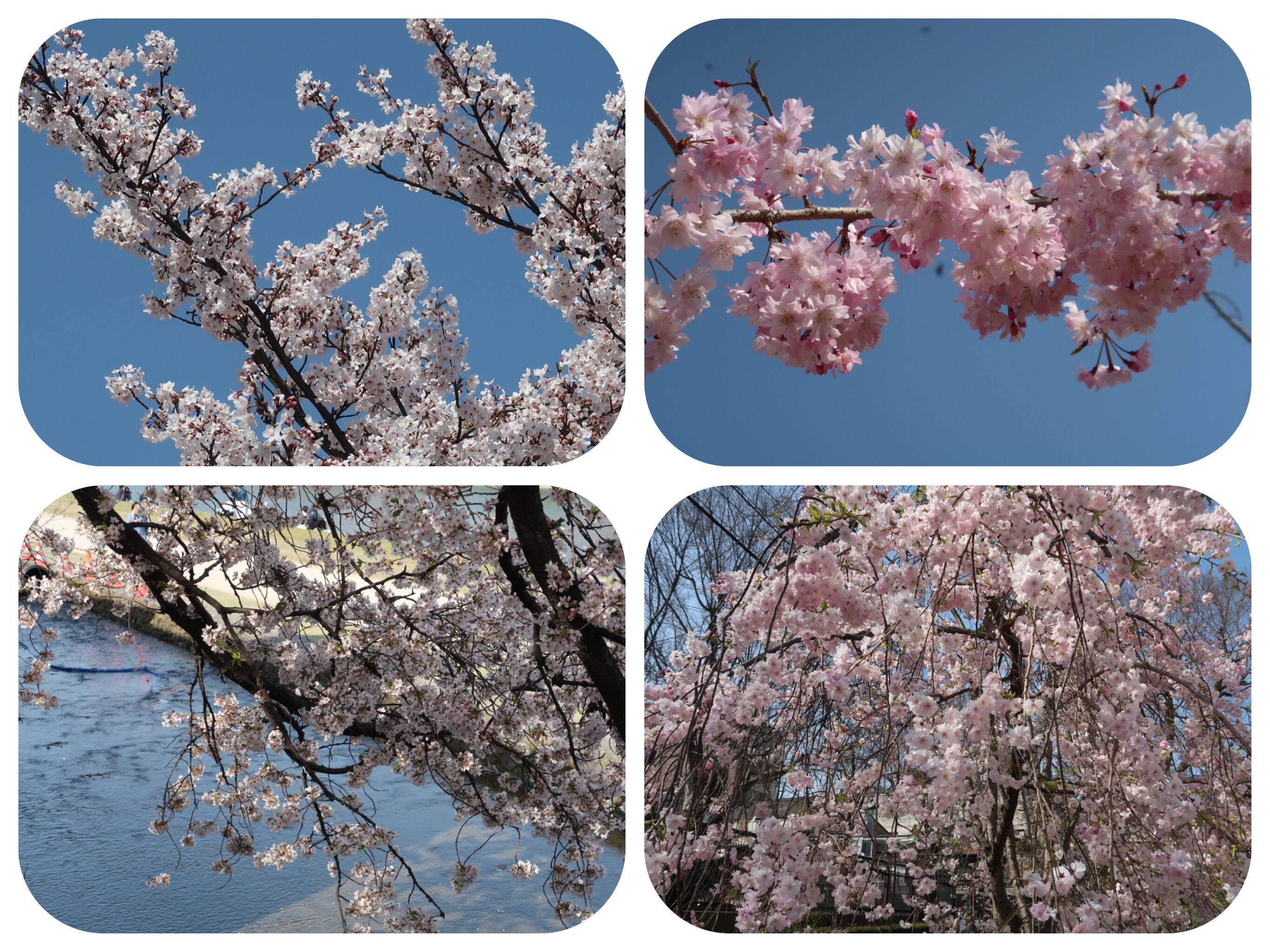
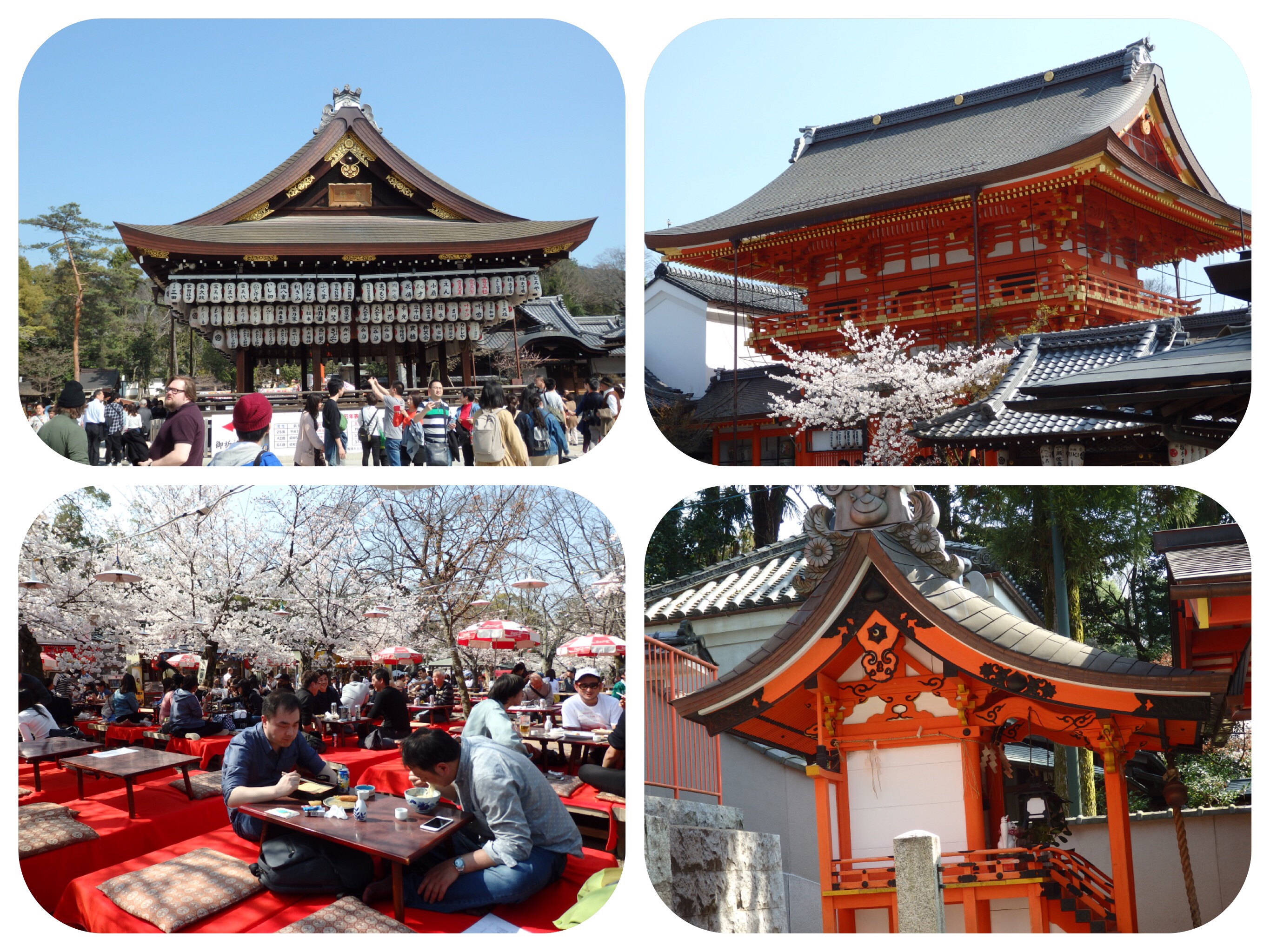
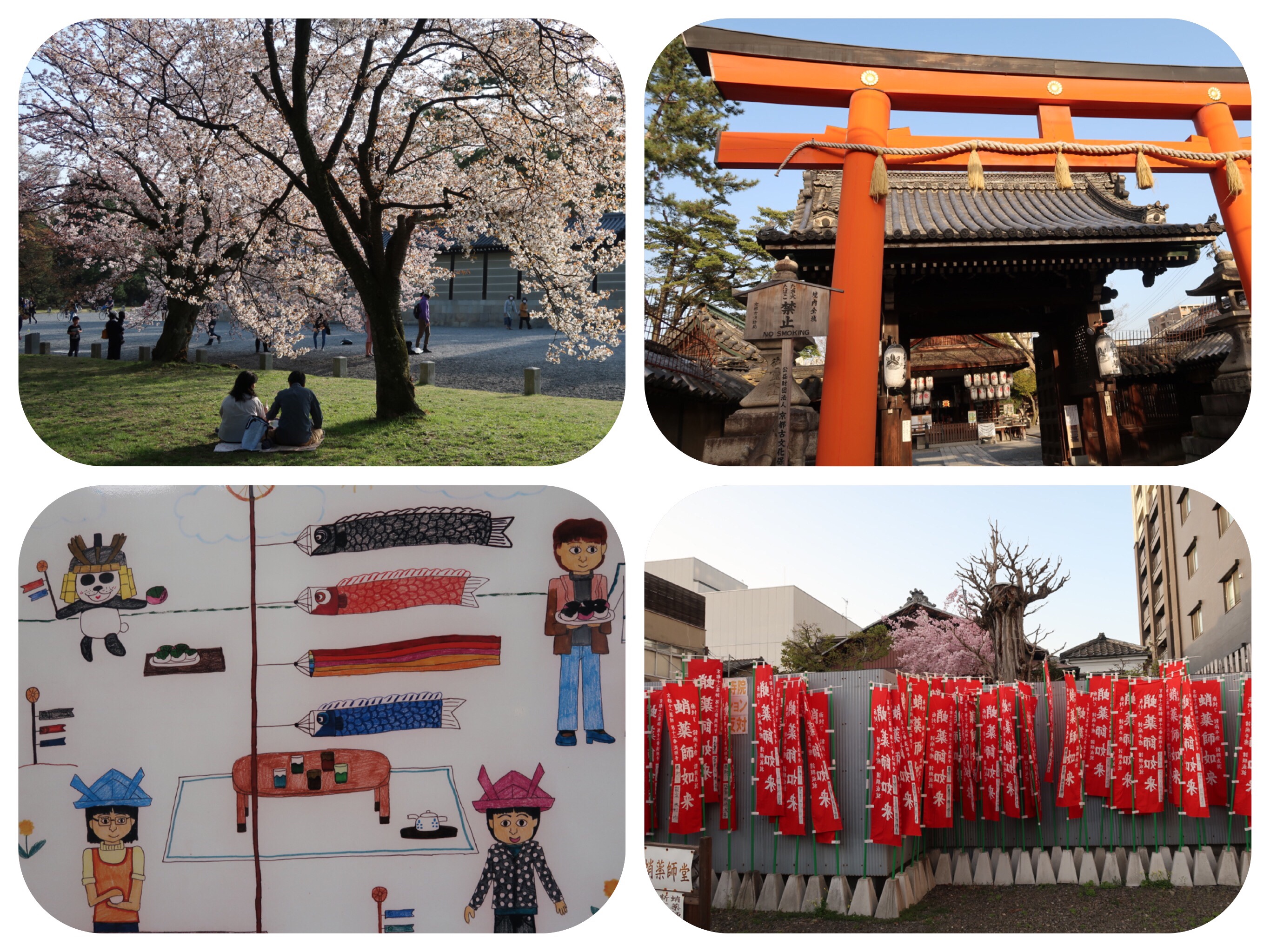
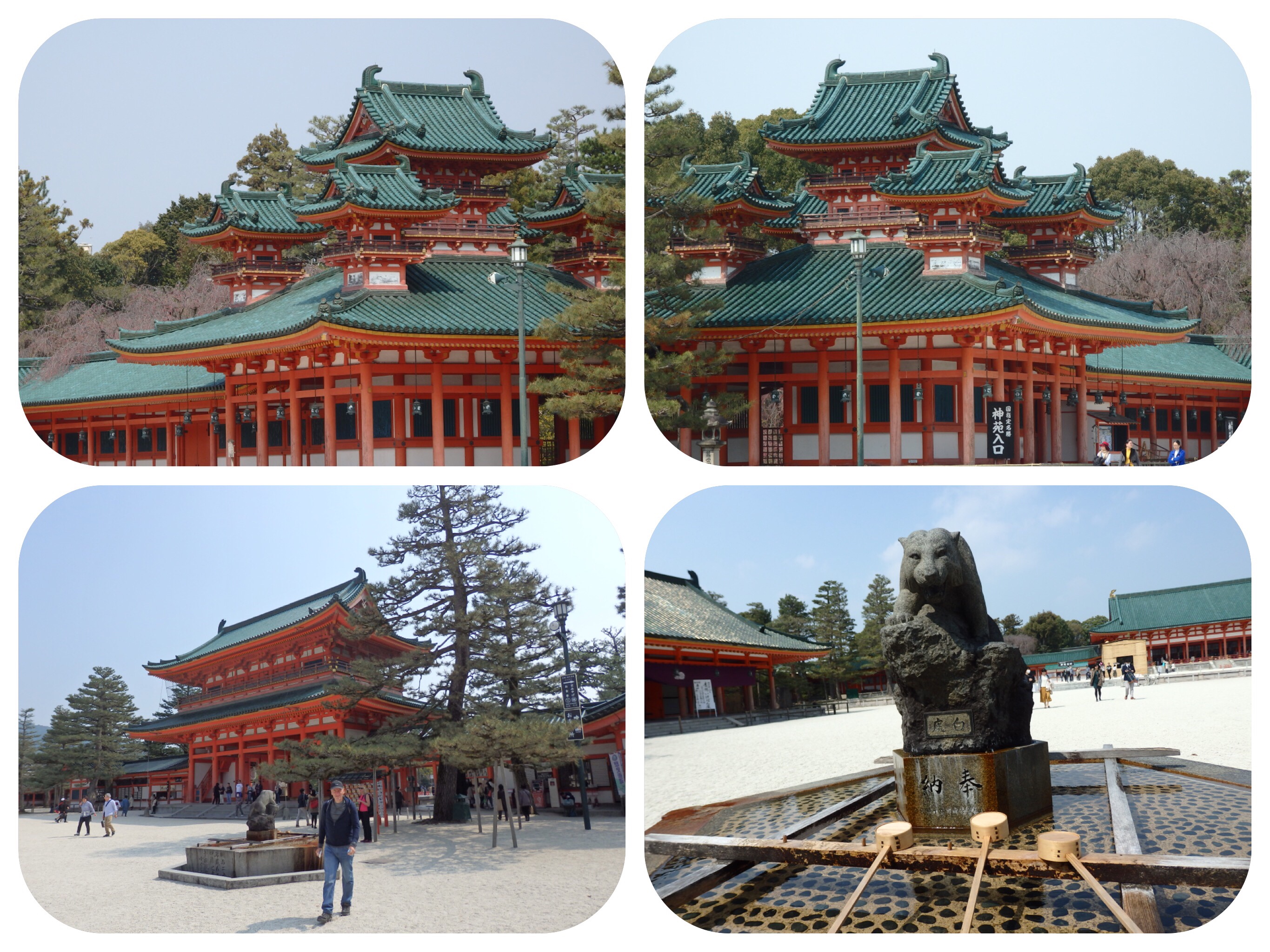
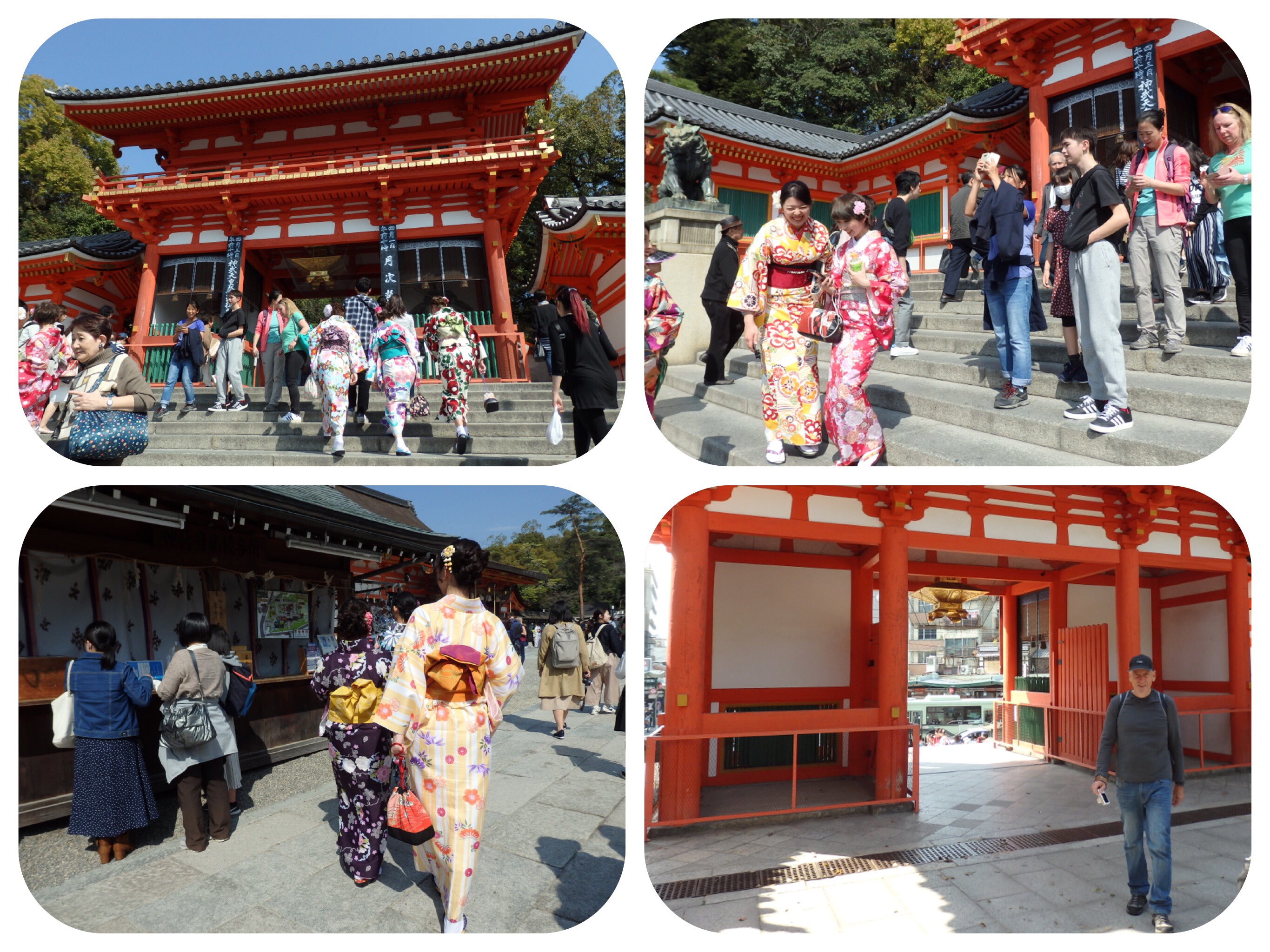
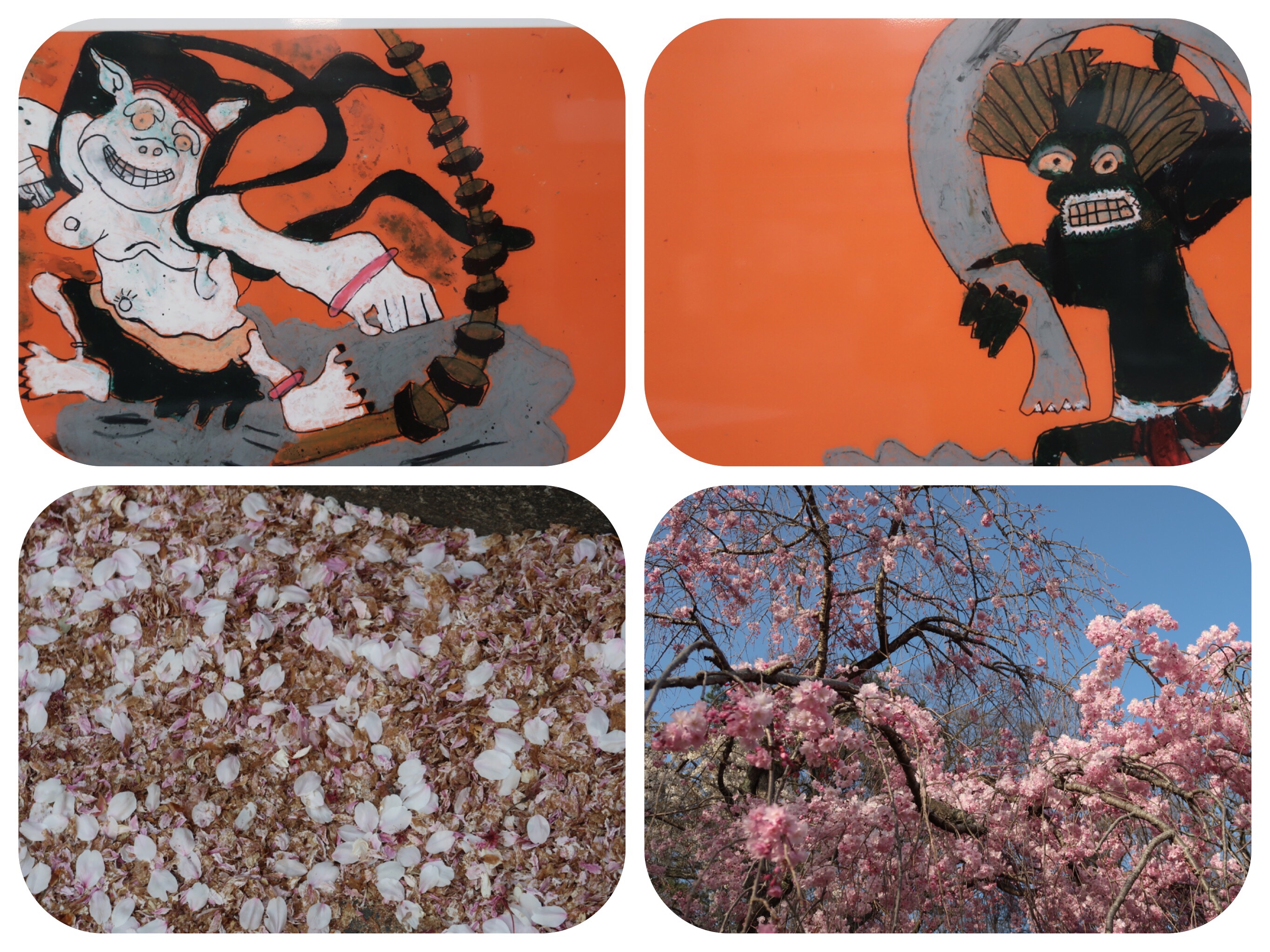
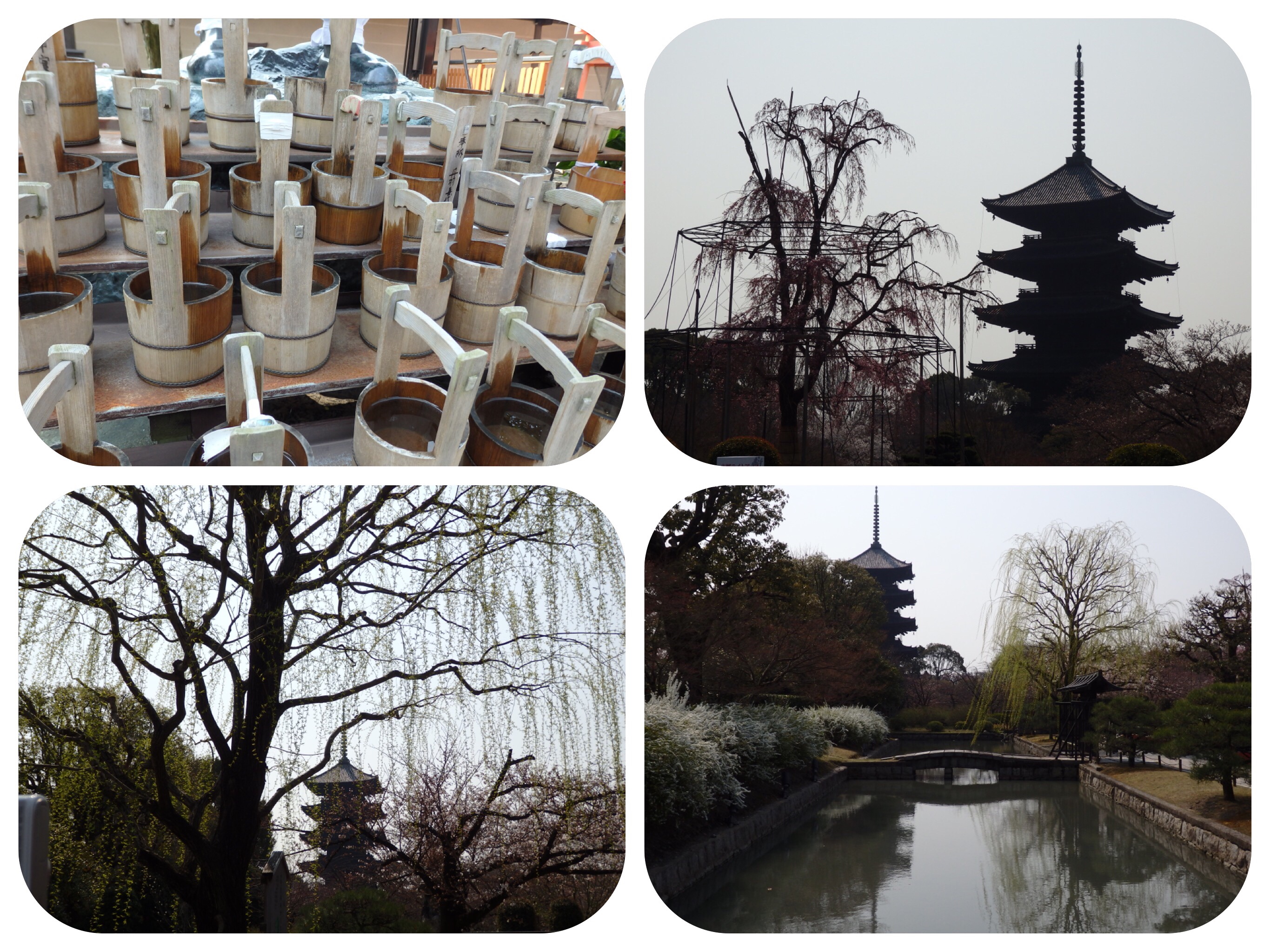
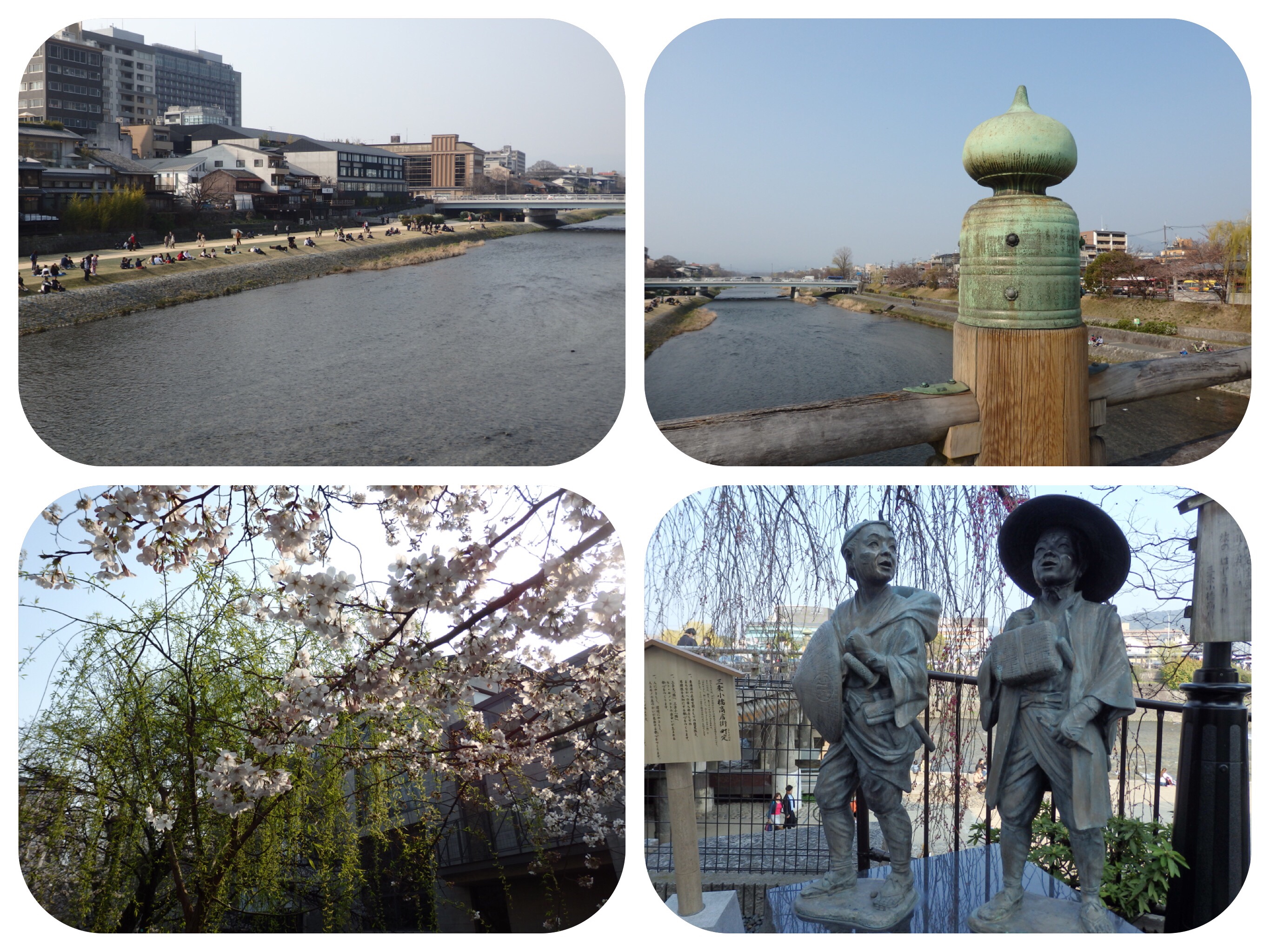
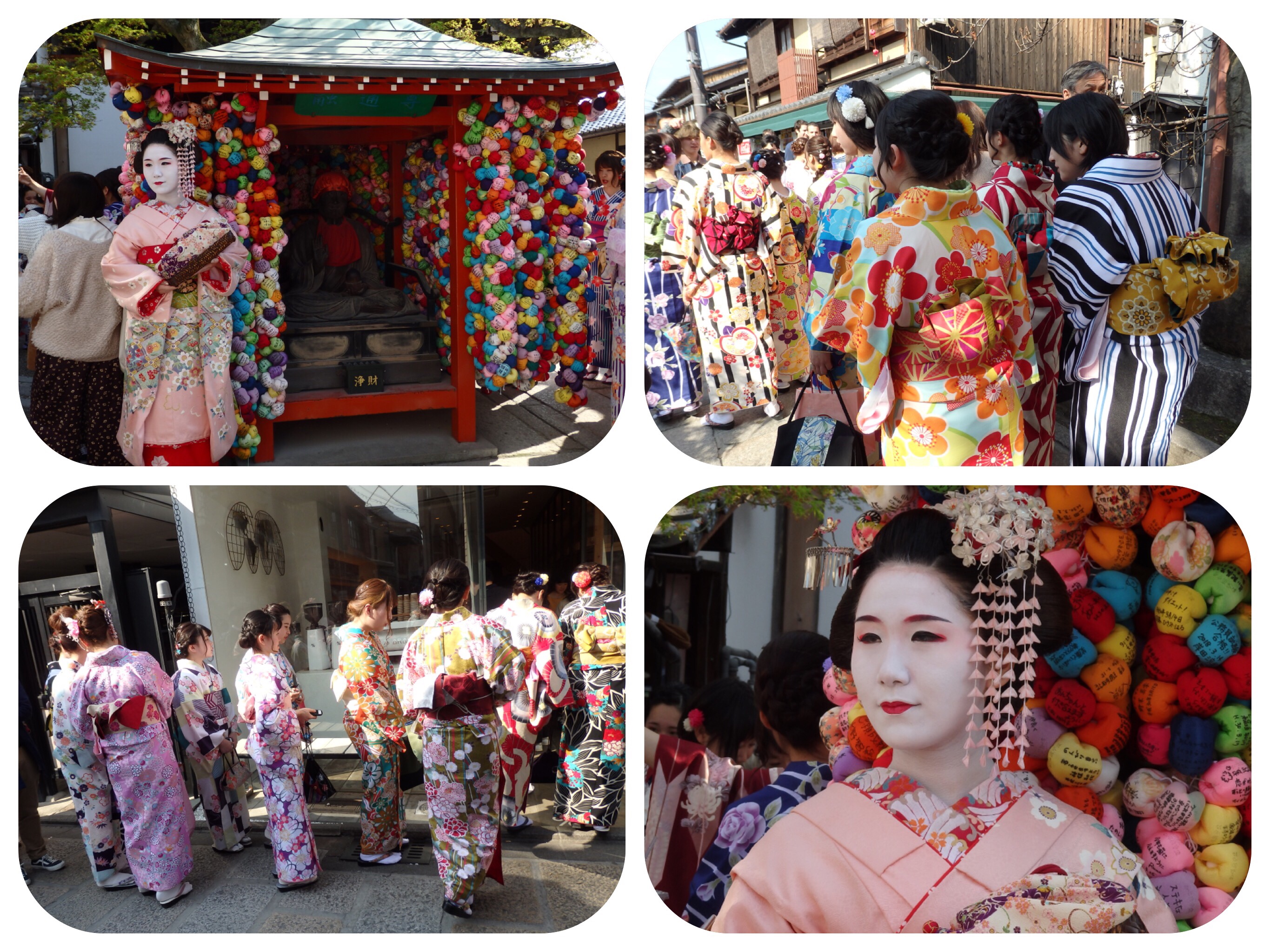
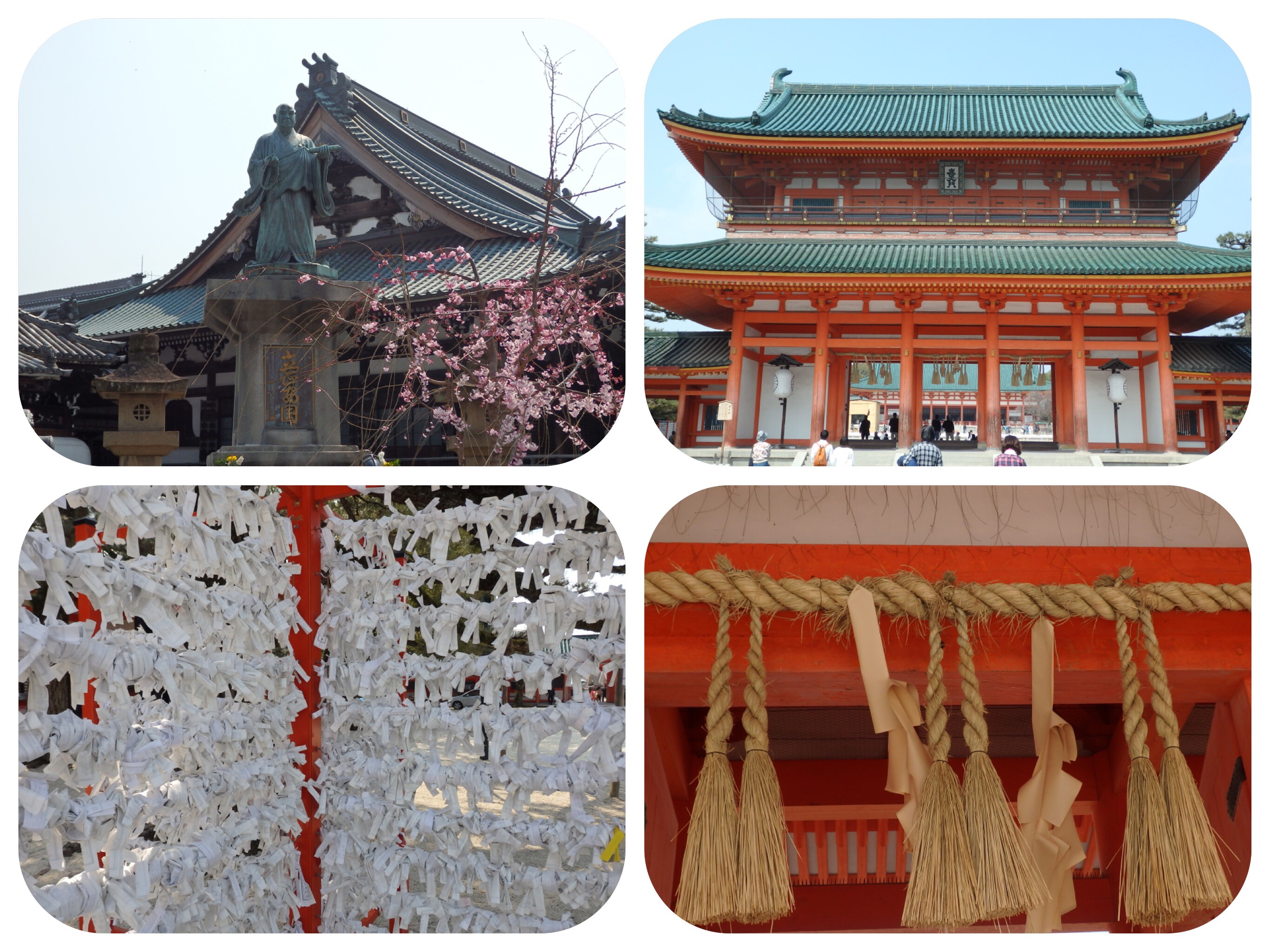
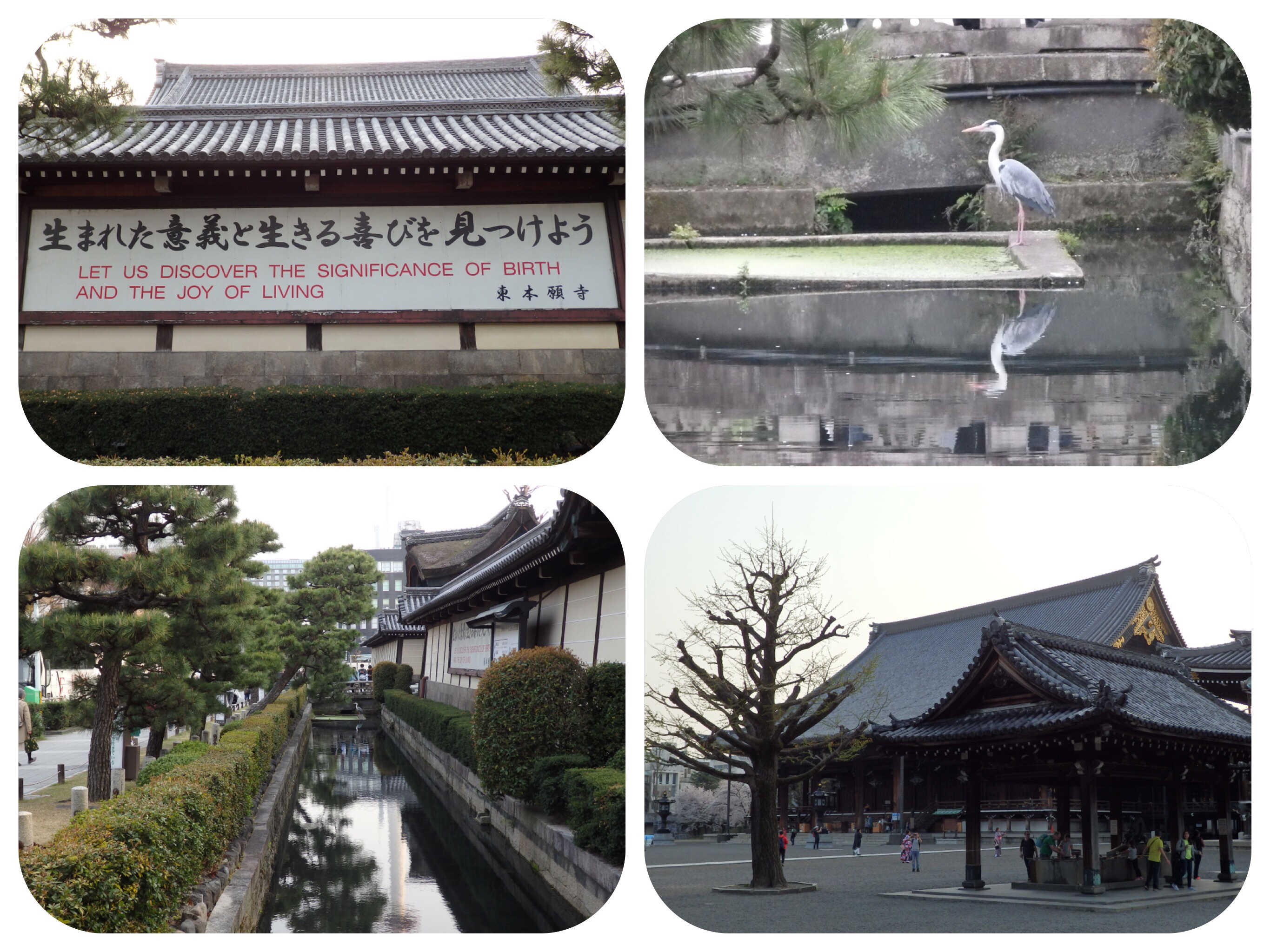
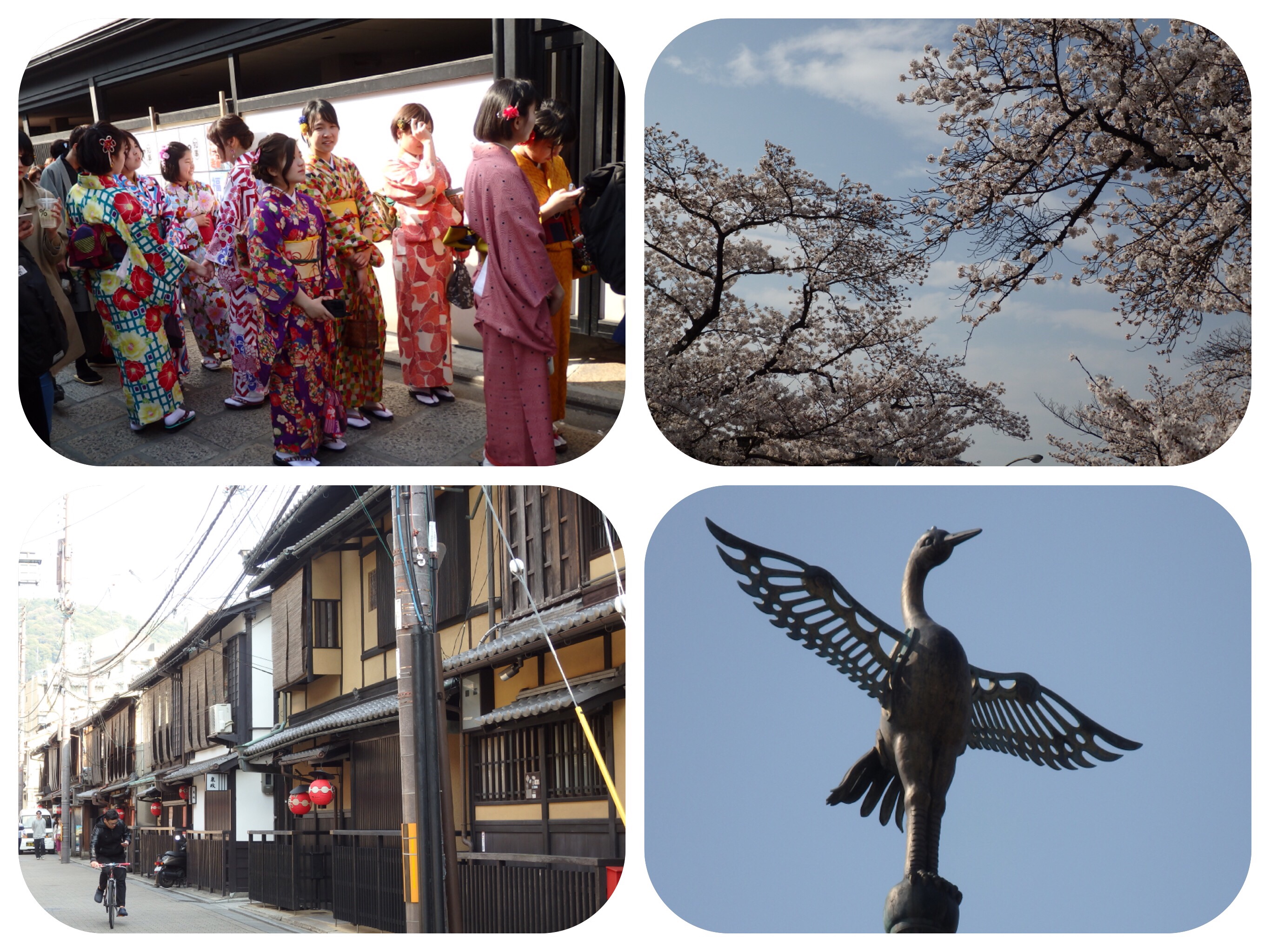

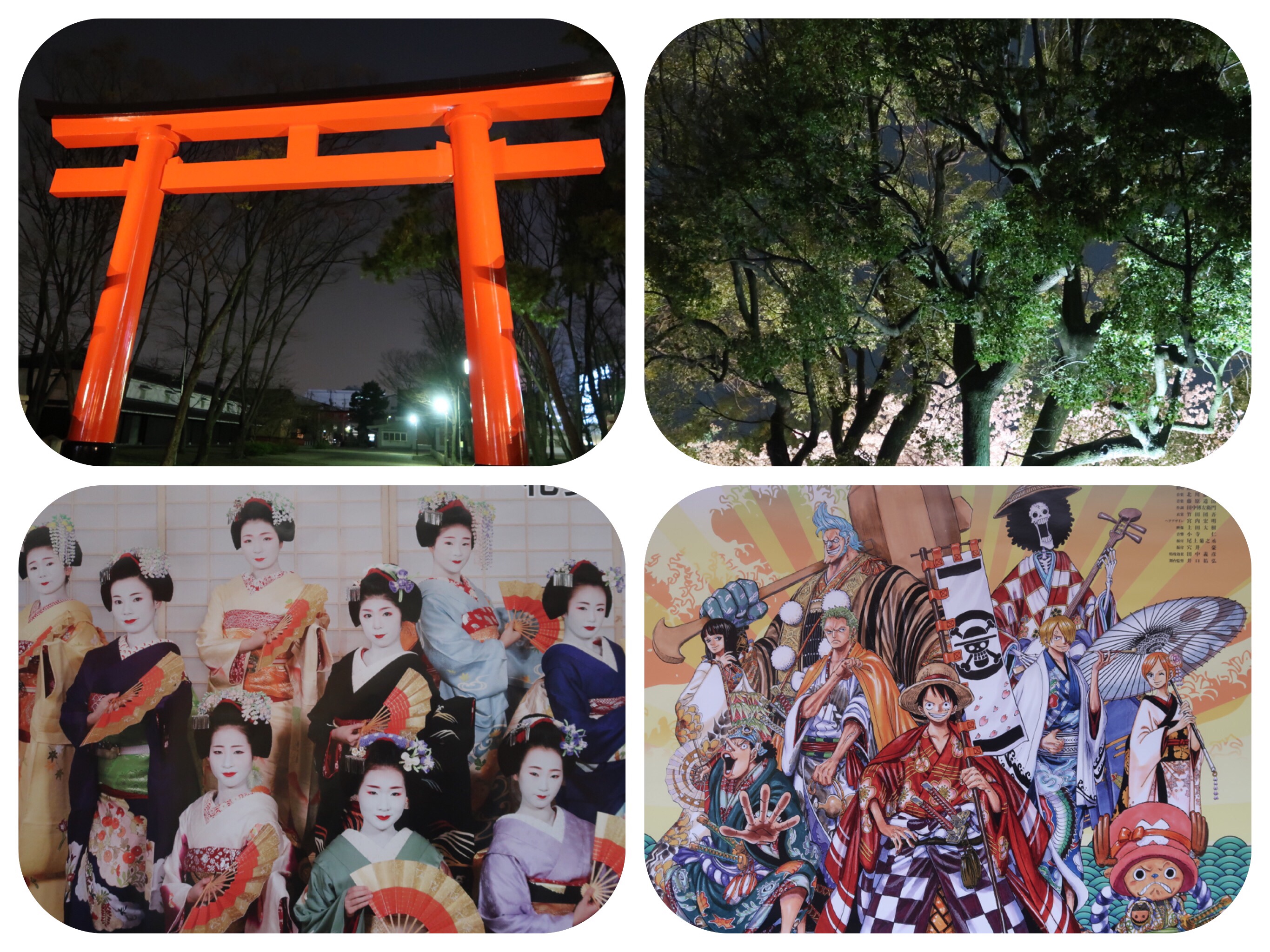
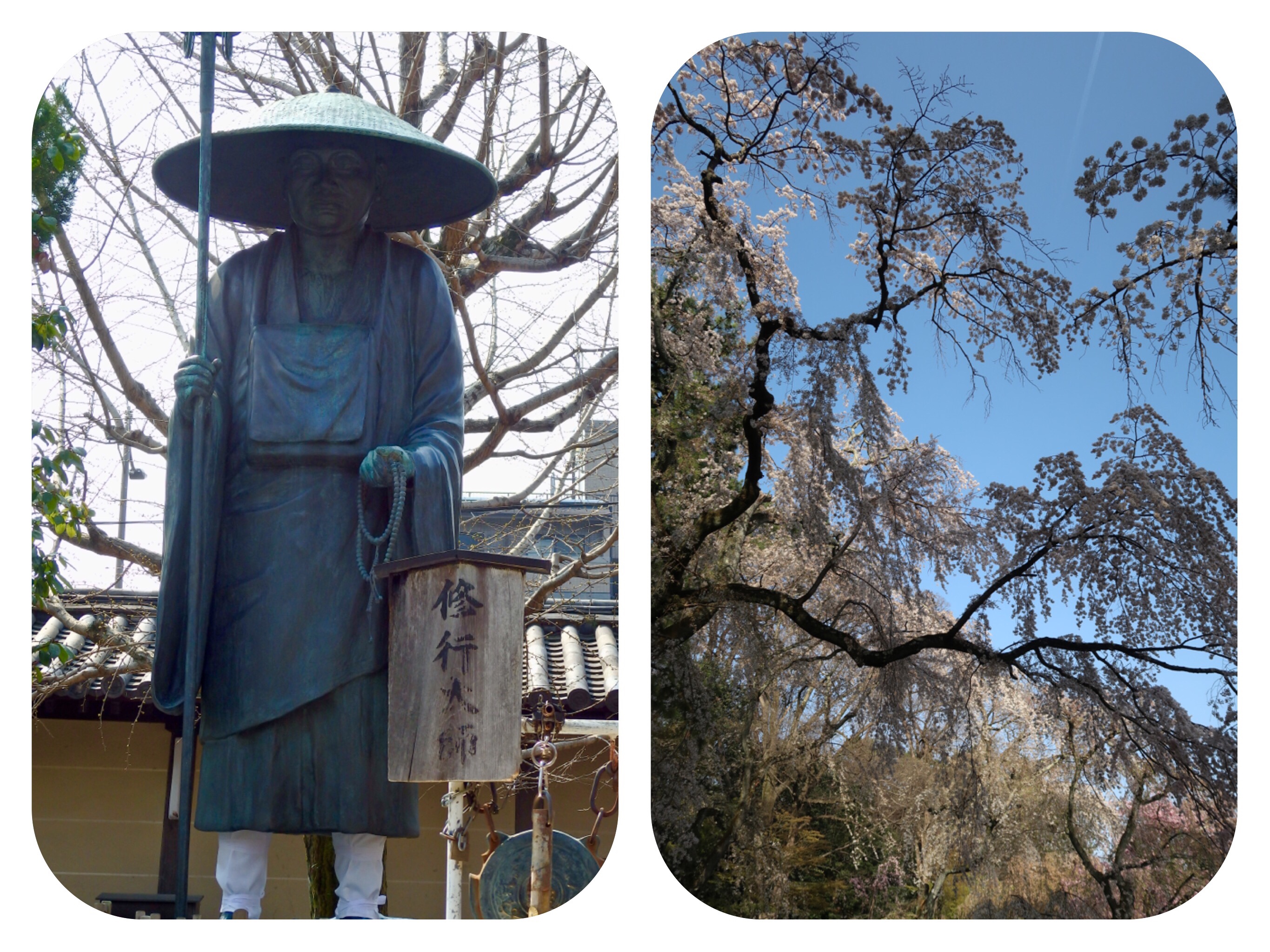
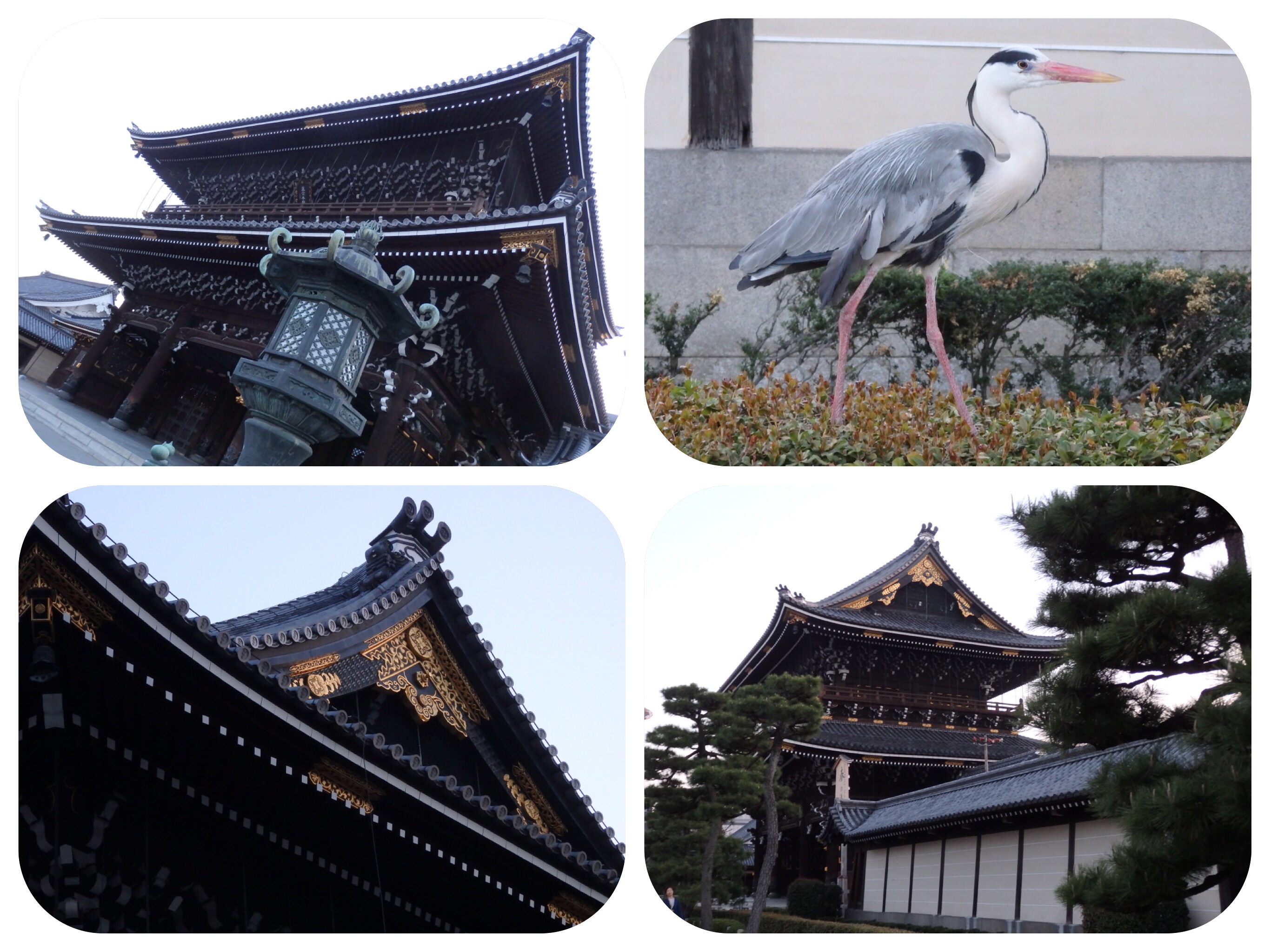
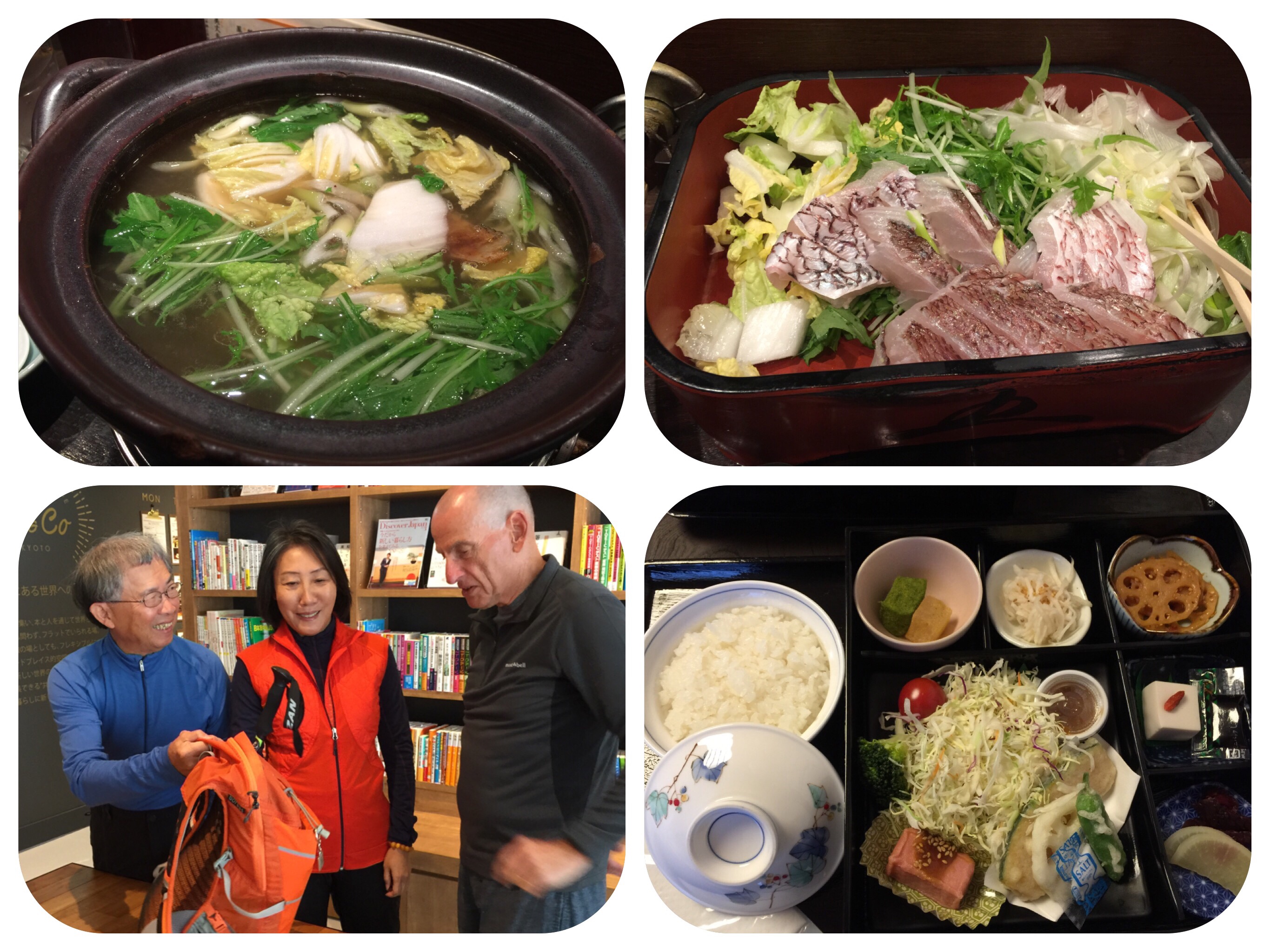
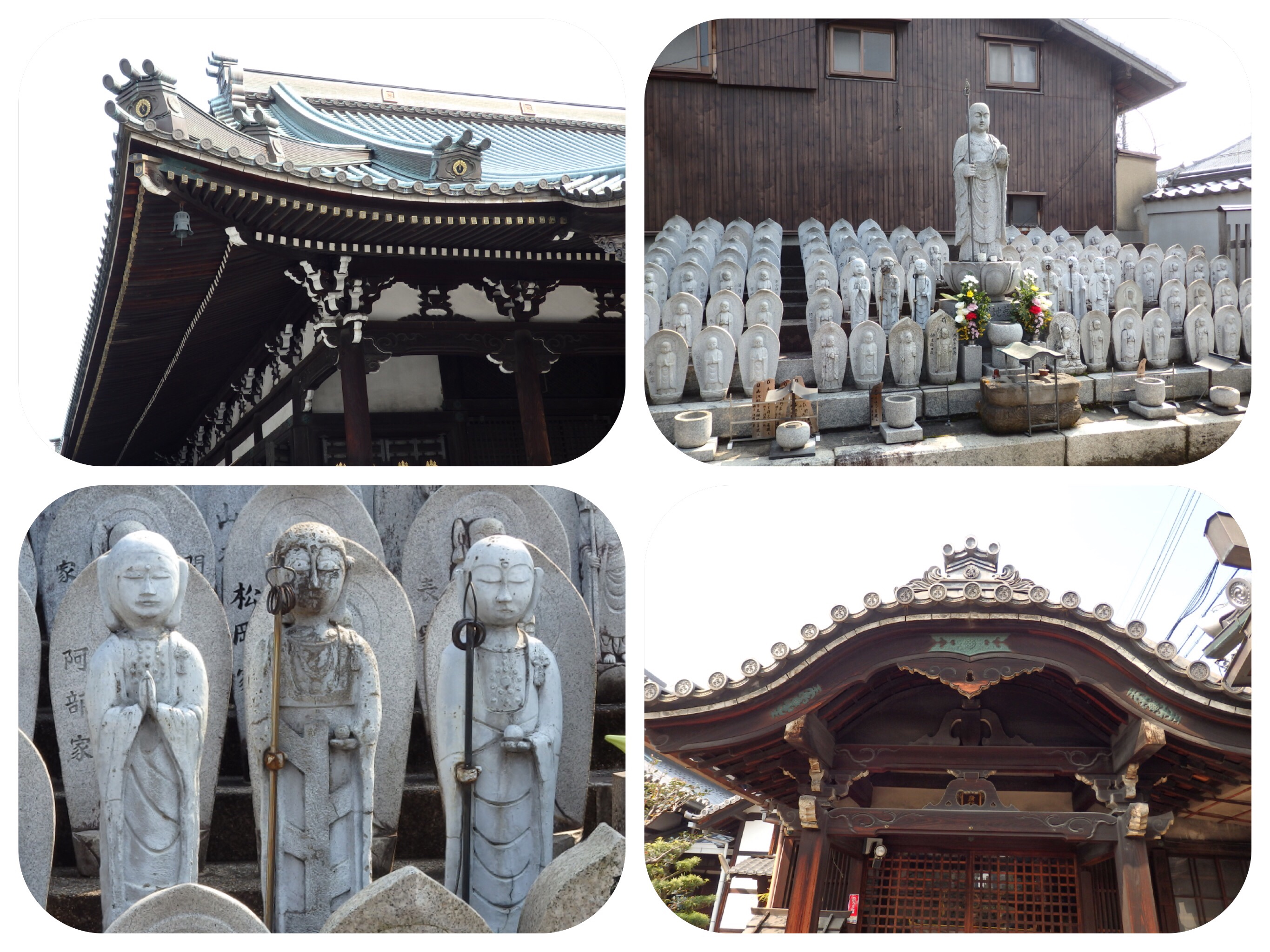
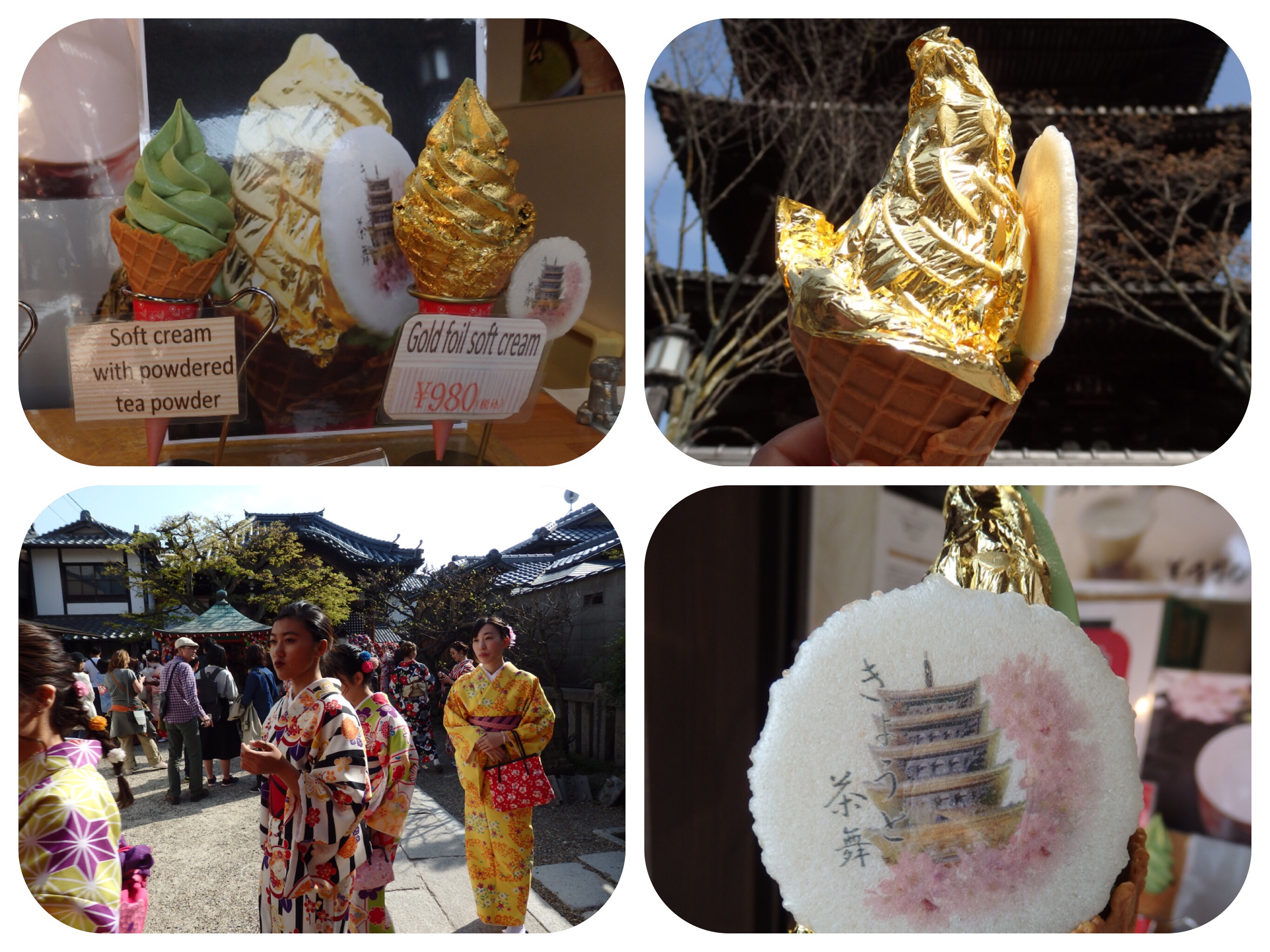
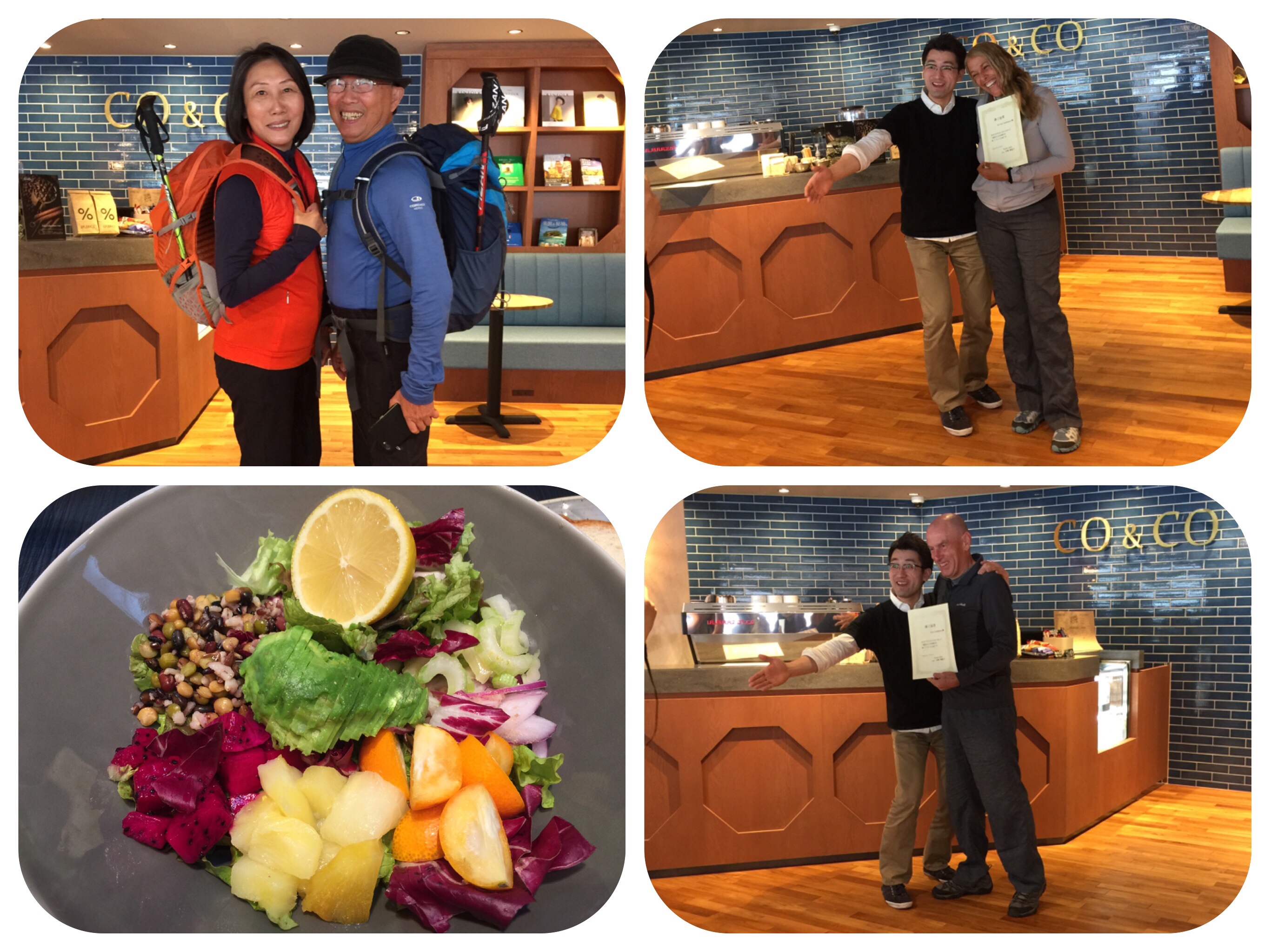
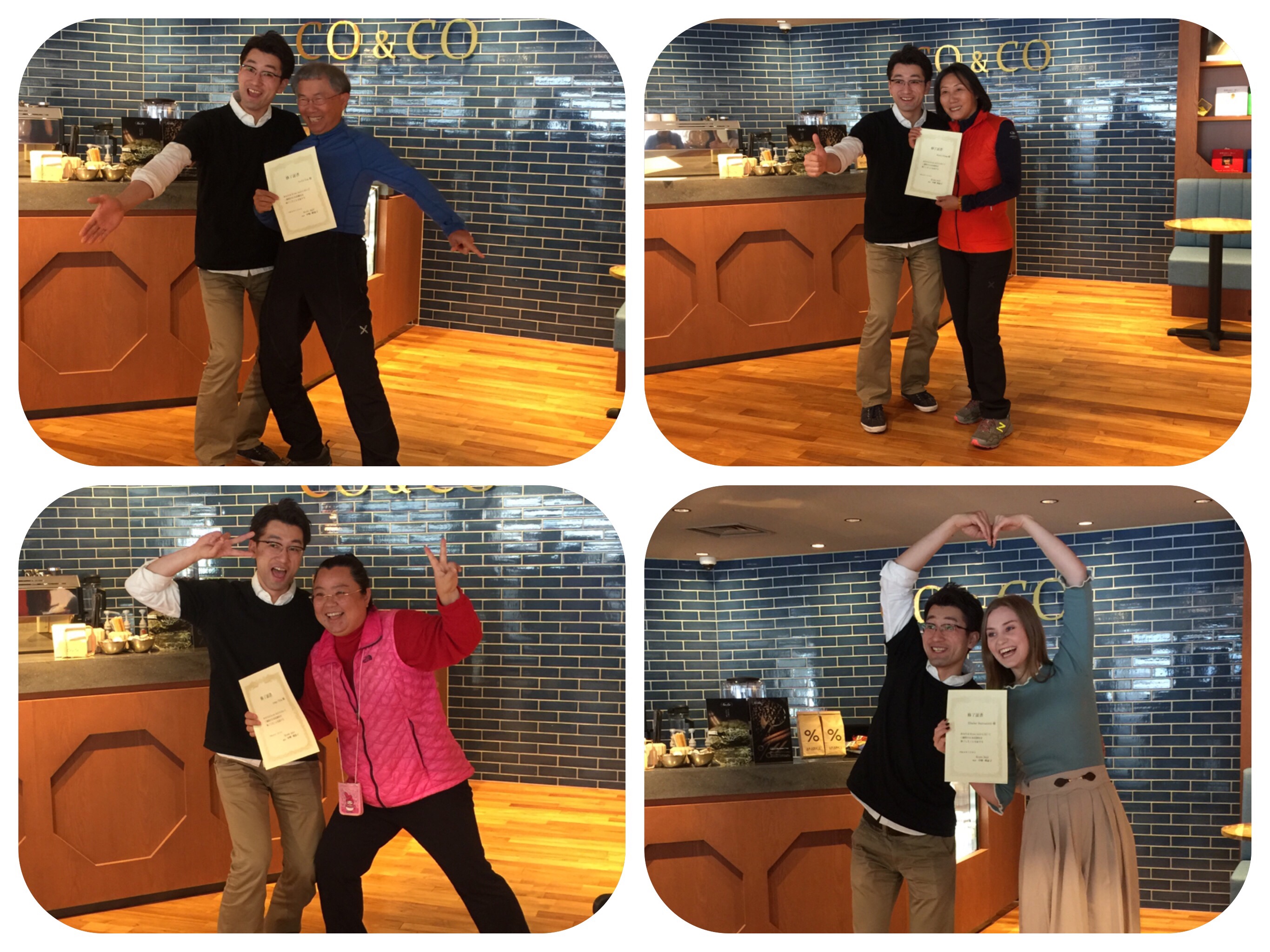
Before leaving Kyoto, we spent our last day walking around the city.
I reflected about the times when we used to go on cycling trips.
On our days off, I wanted to rest from sitting on the bicycle all day.
But here we were, a day before our long walk of the Nakasendo, walking all day long, for nearly twenty kilometers.
We went to the Kyoto Imperial Palace and enjoyed the beautiful Sakura trees, which were in full bloom.
We also enjoyed seeing the people picnicking under the trees.
Our walk took us to the Sanjō bridge, where we will end our Nakasendo month- long walk.
There are stone markers and bronze statues of Kita and Yaji, the two heroes of Ikku Jippensha's comic novel, Shanks' Mare, who walk the Nakasendō.
For centuries, truth seekers, poets, artists, merchants, performers, pilgrims, imperial messengers, feudal lords and princesses, all made their way from Edo (the formal name of Tokyo) to the sacred city of Kyoto, surrounded by mountains and the seat of the Buddhist government near Nara.
There was a time when commoners were not allowed to travel the road.
Common people were only allowed to make pilgrimages to Buddhist temples and visit the shrines along the way.
Later, the Nakasendo became a fertile ground for major adventures, with stories of murders, robberies, elopements, love suicides, rumors of corruption among officials, and other misadventures.
Kita and Yaji got into many funny troubles, got drunk often, ran after women, and generally schemed their way all the way from Edo to Kyoto.
For dinner, we paid a visit to the “Nabe Nazi,” my favorite place to eat Nabe in Kyoto.
It has been years since we dined at his small restaurant in Gion with one long counter.
By now, the Nabe Nazi has contrived new ways to repel customers wanting to dine in his restaurant.
Instead of the customary “welcome, please come in!” greeting, which you get everywhere, he and his staff bark at any foreign customers:
“We serve Chinese food, NOT Japanese food! If it is OK, sit down!”
Shocked at the strange welcome, we mumbled that we just wanted to eat his delicious Yuzu (citron) Nabe.
Hearing this, he allowed us to take a seat at his counter.
We ordered the sea bream Yuzu Nabe with noodles and sat quietly, making sure we do not do anything that could make him mad.
The broth was clear, full of a complex and rich Yuzu flavor.
The soup was poured into the large ceramic Nabe bowl that had been placed on the gas fire before us.
We then put in the bubbling broth some of the green leaves and scallions, and a few pieces of the tender sea bream.
There was also a small amount of spicy green pepper and Yuzu sauce to add some hot spice to the Nabe.
It was just as heavenly tasting this time as we remembered it was.
During the meal, many customers tried to get into the tiny place, only to be unceremoniously turned away.
We were very happy that the Nabe Nazi is still doing so well.
JALS, the Japanese language school that we have enrolled in, were very helpful in allowing us to store our three big bags in their staff room for the month that we will walk the Nakasendo.
Packing our small, 26 liter backpacks that we plan to carry on the pilgrimage was not so easy.
I packed and took things out of the bag again and again.
Our friends, who were going to walk the Kumano Kodo for two weeks, showed us their backpacks.
They felt as light as a feather.
My bag felt so much heavier than theirs.
Finally I put aside the clothes I was planning to walk in, and then I packed:
One extra pair of pants.
Two extra T-shirts
Two extra pairs of socks,
Two extra pairs of underwater and one bra.
A hat, sunglasses, a balaclava for my neck or hair, a very light pair of slippers because I knew that after many hours of walking, I would not want to wear my hiking shoes to go out for dinner.
A camera, charger, memory cards, wallet, passports, phone, phone charger, external phone power pack, a lightweight long sleeve hoodie, a light fleece which we bought at the last minute to make sure we would have something warm if the mountains are cold, a raincoat and rain pants.
The last two items I included because we do plan to walk in the rain and also because we will be crossing the Japanese Alps, where the weather is still cool and the rain pants can double as an extra layer for warmth.
We joked about the fact that now that we’d bought fleeces, the weather has already changed to really warm spring weather and we would be carrying these fleeces all month long for no reason....
Usually when we travel, I carry a selection of toiletries in my bag.
This time my toiletries include only a very small bottle of shampoo, a conditioner, a leave-in conditioner, a thin comb (instead of a good but thick brush), a deodorant, a toothbrush and toothpaste, a small bottle of baking soda which I use for many things, small scissors and tweezers, and a tiny sewing kit in case I need to repair something.
My friend said she took nothing, note even a hair brush or a comb, as she just relied on the toiletries she got in the hotels where she stayed.
As I packed my much larger toiletries, and, to my vanity and shame, a small amount of hair color to dye the grey growth in my hair, I thought about her small backpack and remembered her telling me:
“No need!
No need!
You do not need ANY of these things!
They will just make your back ache...”
Well.... even though I truly admire them and was in awe of their truly small bags, I am embarking on this journey with much more....
We spent the last night of our week-long stay at our fabulous apartment hotel, the “Sunrise Suites.”
We loved this new small hotel in Kyoto, right by Toji temple.
Every morning we got a fabulous Japanese breakfast delivered to our room in a lacquered Bento box.
The design of the hotel has elements of a traditional Japanese ryokan, mixed with clean lines and modern design.
I loved the cloud shaped ceiling lights we had in our room, the crisply-ironed summer kimonos we got to wear each evening, and the zen river of stones in the center of the hotel.
There was a fish pond at the entrance, light colored wood sliding doors and windows lined with white rice paper.
Yet it is a modern urban hotel with spacious rooms, a washing machine in each apartment and a small kitchen, which we never used.
Because we only have 33 days to walk the Nakasendo, we decided not to spend any time in Tokyo this time.
We will start at Nihonbashi, the starting point of the Nakasendo, and walk straight out of town into the northern mountains.
I feel a bit of reluctance to be leaving our comfy hotel, the nice school with its beautiful lobby with sofas and cozy study rooms, and the many comforts of the city, to be walking all day long for many hours in all weather conditions....
But I know those are normal jitters before any major adventure.
I will not listen to these feelings!
I am ready, come What May.....
With love,
Tali
